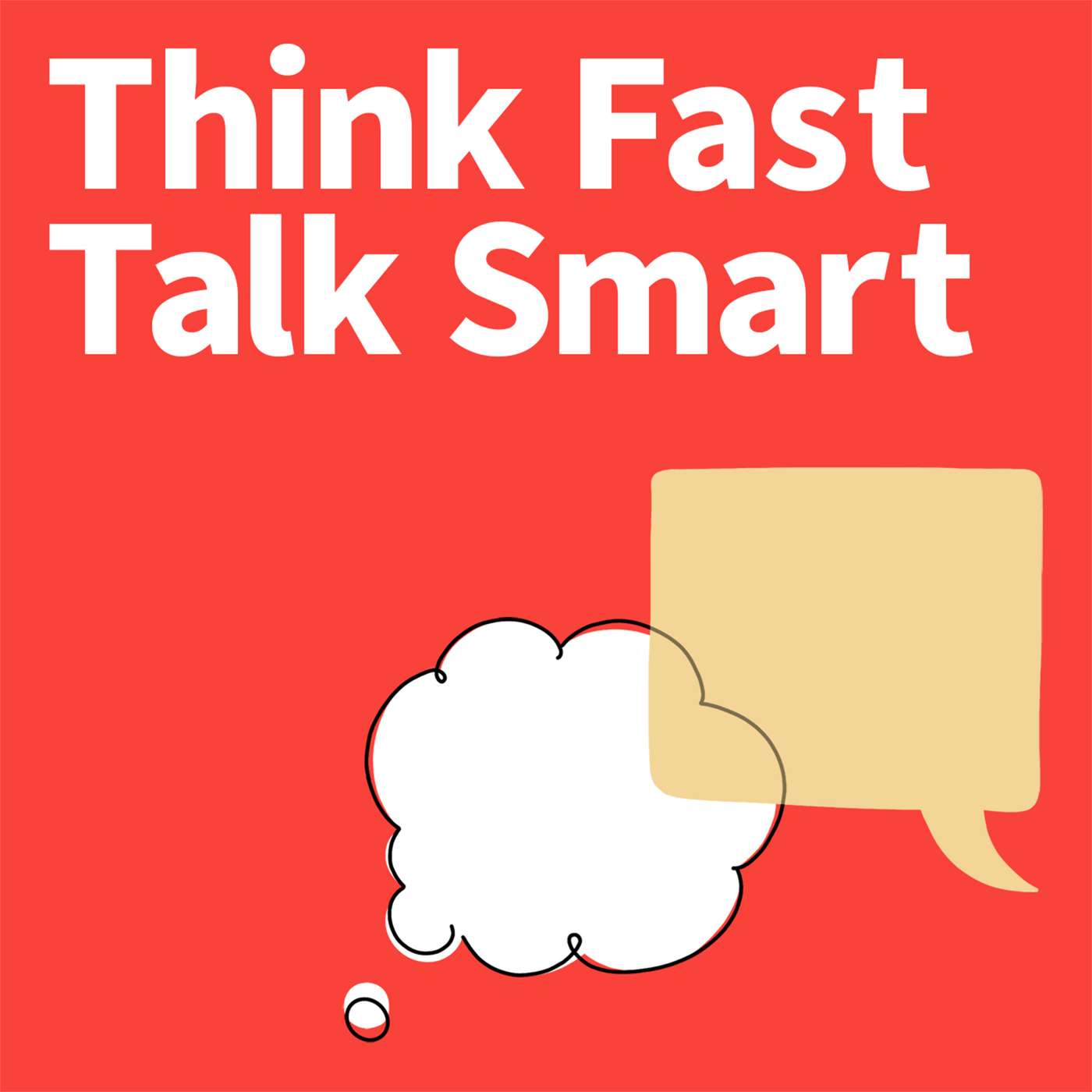258 episodes
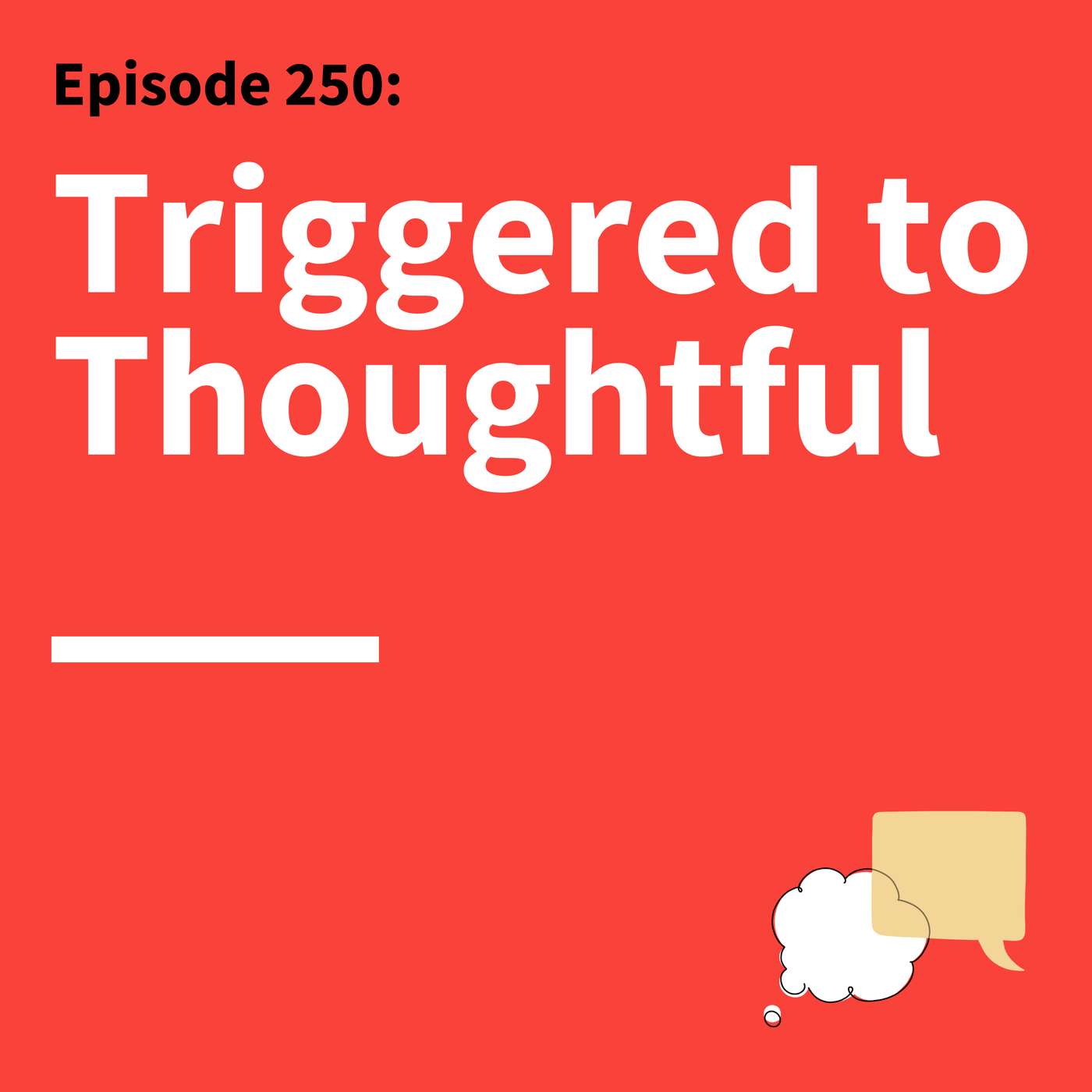

Some of the most meaningful shifts in how we communicate come from the moments that challenge us the most. In this special 250th episode of https://www.fastersmarter.io/, Matt Abrahams reflects on the insights that have shown him how conflict can become a catalyst for clarity, connection, and even compassion. From Amy Gallo’s https://www.fastersmarter.io/guests/amy-gallo/ reminder that the “right kind of conflict” leads to better outcomes to Jenn Wynn’s https://www.fastersmarter.io/guests/jenn-wynn/ framework for calming our nervous system before stepping into a hard conversation and Julia Minson’s https://www.fastersmarter.io/guests/julia-minson/ HEAR method for signaling genuine curiosity, each tool helps turn tension into understanding for every stage of conflict. And with Joseph Grenny’s https://www.fastersmarter.io/guests/joseph-grenny/ guidance on noticing when our motives shift from problem-solving to winning, this episode highlights how self-awareness can reset even the toughest moments. Whether you’re navigating workplace disagreements or everyday friction at home, this milestone episode offers practical ways to make difficult dialogue feel less daunting — and a real opportunity to communicate better. EPISODE REFERENCE LINKS: __ __ MUSIC FROM BLUE DOT SESSIONS: Etude 3 Chessanta https://app.sessions.blue/browse/track/353731 Etude 1 Cherub https://app.sessions.blue/browse/track/353735 Etude 12 Taminy https://app.sessions.blue/browse/track/353736 Ojufemi https://app.sessions.blue/browse/track/353732 Cloud Cannon https://app.sessions.blue/browse/track/353733 The Caspian Sea https://app.sessions.blue/browse/track/353734 Doghouse https://app.sessions.blue/browse/track/353737 An Opus in Ab https://app.sessions.blue/browse/track/353738 First Results https://app.sessions.blue/browse/track/353739 Cach PKL https://app.sessions.blue/browse/track/353740 Tenaway https://app.sessions.blue/browse/track/353741 CONNECT: __ __ TIMED LINKS: __ __ CHAPTERS: __ (00:00) - Introduction (03:36) - Why Conflict Is Necessary (04:35) - Transforming Unproductive Conflict (05:23) - Inner Experience of Difficult Conversations (06:19) - Self-Awareness, Pause, Reframe (08:26) - Four Questions For Understanding (11:45) - Acting Curious vs. Feeling Curious (14:01) - The HEAR Framework (18:22) - Humility & Willingness To Be Wrong (19:53) - Practice & Repetition (21:20) - Acknowledging Motives (22:34) - Two Questions to Reset Motives (24:28) - Bringing the Frameworks Together (25:54) - What Really Matters __ ******** Thank you to our sponsors. THESE PARTNERSHIPS SUPPORT THE ONGOING PRODUCTION OF THE PODCAST, ALLOWING US TO BRING IT TO YOU AT NO COST. Go to QUINCE.COM/THINKFAST https://www.quince.com/women/best-sellers?utm_source=veritone&utm_medium=podcast&utm_campaign=thinkfast FOR FREE SHIPPING ON YOUR ORDER AND 365-DAY RETURNS. JOIN OUR THINK FAST TALK SMART LEARNING COMMUNITY AND BECOME THE COMMUNICATOR YOU WANT TO BE. https://learning.fastersmarter.io/?redirect_from=podpage


Strong collaboration starts with thoughtful practices and clear communication. As Molly Sands https://www.fastersmarter.io/guests/molly-sands/, Head of the Teamwork Lab at Atlassian, emphasizes, the teams that thrive are the ones that regularly pause to align on what matters and how they’re progressing. “You want to know if you’re making progress,” she notes, “and you want ways to redirect early—before you’re scrambling at the end.” Through her research with teams across Atlassian and around the world, Sands has seen how small, consistent habits—monthly goal reviews, transparent updates, shared spaces for spontaneous interaction—build alignment, psychological safety, and momentum. And in hybrid and distributed environments, she highlights how “bursty” collaboration patterns and intentional meeting design help teams move faster without burning out. In this Quick Thinks episode of https://www.fastersmarter.io/, Sands and host Matt Abrahams break down the rituals that make teamwork work, from OKR check-ins to collaboration hours to the rotating Chief Vibes Officer. No matter where your team sits, Sands shows how intentional communication unlocks connection, speed, and more satisfying ways of working together. EPISODE REFERENCE LINKS: __ __ CONNECT: __ __ CHAPTERS: __ (00:00) - Introduction (02:43) - Measuring Collaboration the Right Way (05:35) - Training Leaders & Goal Rituals (07:49) - Creating Space for Spontaneous Work (11:20) - Making In-Person Time Count (11:44) - Three High-Impact Team Gatherings (14:00) - Supporting Diverse Communication Styles __ ******** Thank you to our sponsors. THESE PARTNERSHIPS SUPPORT THE ONGOING PRODUCTION OF THE PODCAST, ALLOWING US TO BRING IT TO YOU AT NO COST. Go to QUINCE.COM/THINKFAST https://www.quince.com/women/best-sellers?utm_source=veritone&utm_medium=podcast&utm_campaign=thinkfast FOR FREE SHIPPING ON YOUR ORDER AND 365-DAY RETURNS. JOIN OUR THINK FAST TALK SMART LEARNING COMMUNITY AND BECOME THE COMMUNICATOR YOU WANT TO BE. https://learning.fastersmarter.io/?redirect_from=podpage
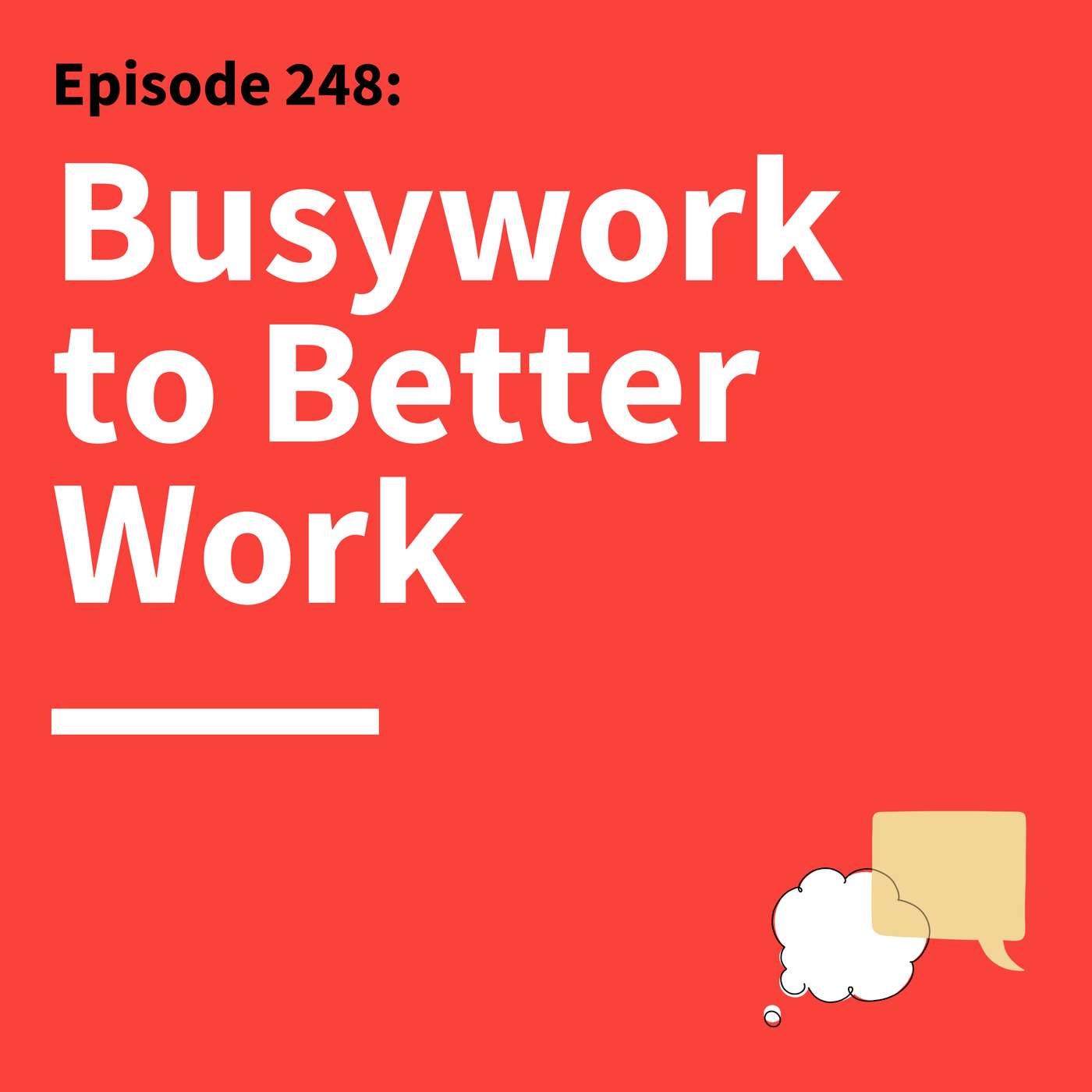

To collaborate, we have to communicate. As Molly Sands https://www.fastersmarter.io/guests/molly-sands/ knows, “The more that we can get on the same page, the more effective we are.” Sands is a behavioral scientist and the head of the Teamwork Lab at Atlassian, where she researches how teams can collaborate more effectively and efficiently, especially in distributed and hybrid work environments. As she’s seen in her research and within her own team, “People can accomplish a lot more together when they work well together.” The key to unlocking that potential lies in communication that aligns people not just in their activity, but in their deeper goals and vision. “The best work happens when you start by asking why,” she says, “getting people to really understand: why is this a problem, why do we wanna solve it, and how are we uniquely positioned to do that? The more that we can map this out together, the more effective our teams tend to be.” In this episode of https://www.fastersmarter.io/, Sands and host Matt Abrahams discuss strategies for effective collaboration, from “page-led” meetings and asynchronous video messages to using AI as a collaborator. Whether your team is working face-to-face or across time zones, Sands’ insights show how better communication is the key to better collaboration. EPISODE REFERENCE LINKS: __ __ CONNECT: __ __ CHAPTERS: __ (00:00) - Introduction (02:32) - How the Teamwork Lab Works (04:03) - Top Challenges for Teams (04:37) - Clarifying Goals & Alignment (07:19) - AI as a Collaborative Partner (09:25) - Atlassian’s AI Onboarding Buddy (12:49) - Rethinking Meetings (15:58) - Three Types of Work Time (17:17) - Replacing Meetings with Asynchronous Video (20:02) - The Final Three Questions __ ******** THIS EPISODE IS SPONSORED BY GRAMMARLY. LET GRAMMARLY TAKE THE BUSYWORK OFF YOUR PLATE SO YOU CAN FOCUS ON HIGH-IMPACT WORK. DOWNLOAD GRAMMARLY FOR FREE TODAY https://www.grammarly.com/?utm_campaign=arm&utm_medium=cpc&utm_source=podcast&utm_content=directpodcasts JOIN OUR THINK FAST TALK SMART LEARNING COMMUNITY AND BECOME THE COMMUNICATOR YOU WANT TO BE. https://learning.fastersmarter.io/?redirect_from=podpage
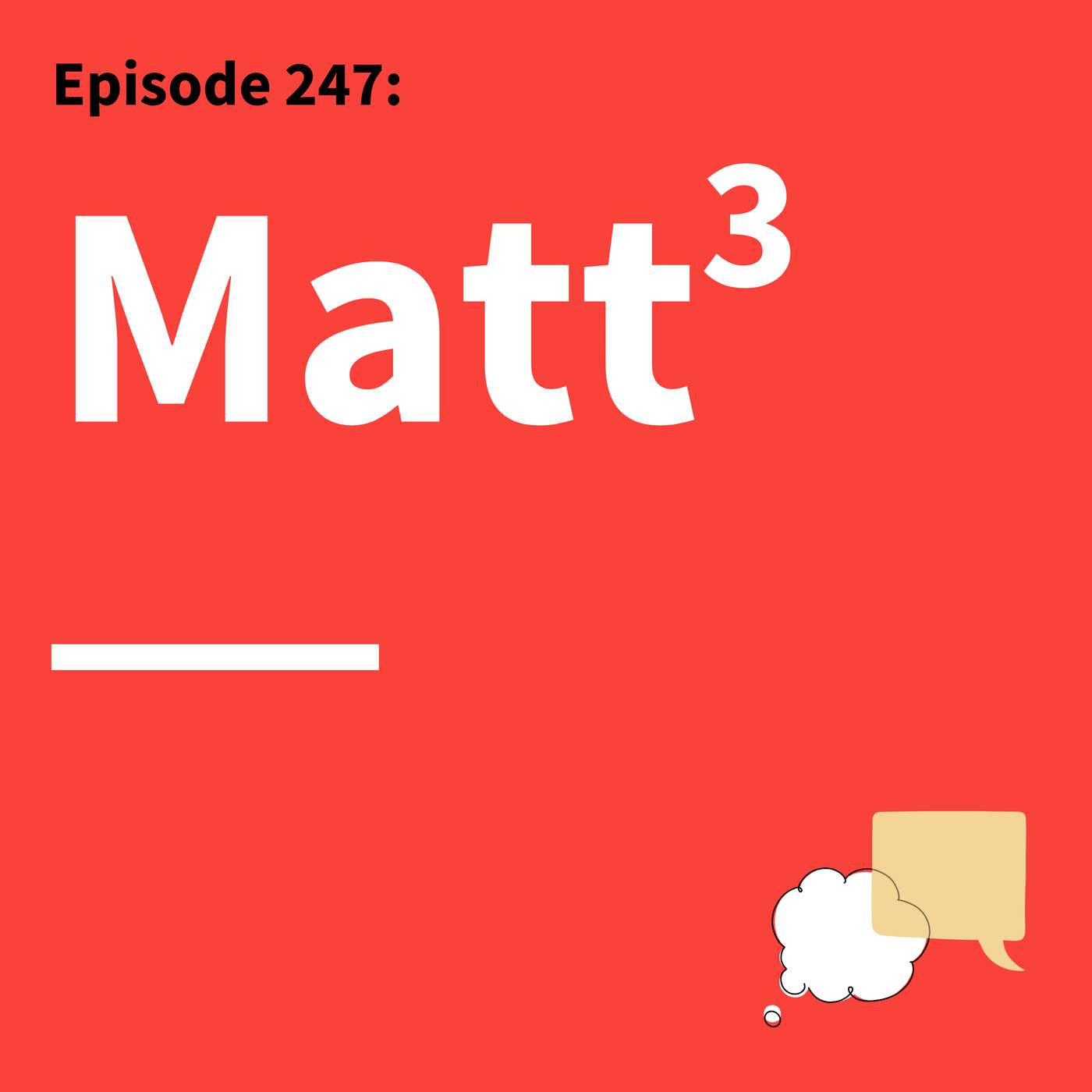

Technology promises many things, but few experiments illustrate its potential more vividly than a coach in conversation with his own digital counterpart. In this episode, Matt Abrahams introduces two new AI-powered tools from the Think Fast Talk Smart Online Learning Community: Coach Matt and Chat Matt. Trained on years of Matt’s communication teachings and podcast insights, these digital counterparts offer a rare opportunity to watch human expertise meet machine-driven guidance in real time. Coach Matt begins by addressing a familiar tension: the surge of anxiety that surfaces before high-stakes speaking moments. His approach reframes that nervousness as a form of future-focused energy that can be redirected toward curiosity and clarity. He also introduces the “What–So What–Now What” framework, a simple but powerful method for giving feedback that remains constructive, direct, and grounded in shared purpose. Chat Matt then steps into the conversation, tackling the challenge of crafting a compelling proposal in just two minutes. Its responses reveal how AI can quickly synthesize communication principles while also highlighting the evolving space where human nuance and digital precision intersect. By pairing Matt Abrahams with his own digital counterparts, this episode of Think Fast Talk Smarts explores the future of communication learning—one where technology doesn’t replace the coach, but expands the possibilities for insight, clarity, and confident expression. EPISODE REFERENCE LINKS: __ __ CONNECT: __ __ CHAPTERS: __ (00:00) - Introduction (03:13) - Introducing Coach Matt and Chat Matt (04:14) - Coach Matt: Speaking Anxiety (06:14) - Reframing Nervousness (07:14) - Constructive Feedback Framework (08:33) - Testing Communication Advice (10:07) - Chat Matt: High-Stakes Presenting (13:59) - Strengthening a Two-Minute Proposal __ ******** Thank you to our sponsors. THESE PARTNERSHIPS SUPPORT THE ONGOING PRODUCTION OF THE PODCAST, ALLOWING US TO BRING IT TO YOU AT NO COST. Go to QUINCE.COM/THINKFAST https://www.quince.com/women/best-sellers?utm_source=veritone&utm_medium=podcast&utm_campaign=thinkfast FOR FREE SHIPPING ON YOUR ORDER AND 365-DAY RETURNS. JOIN OUR THINK FAST TALK SMART LEARNING COMMUNITY AND BECOME THE COMMUNICATOR YOU WANT TO BE. https://learning.fastersmarter.io/?redirect_from=podpage
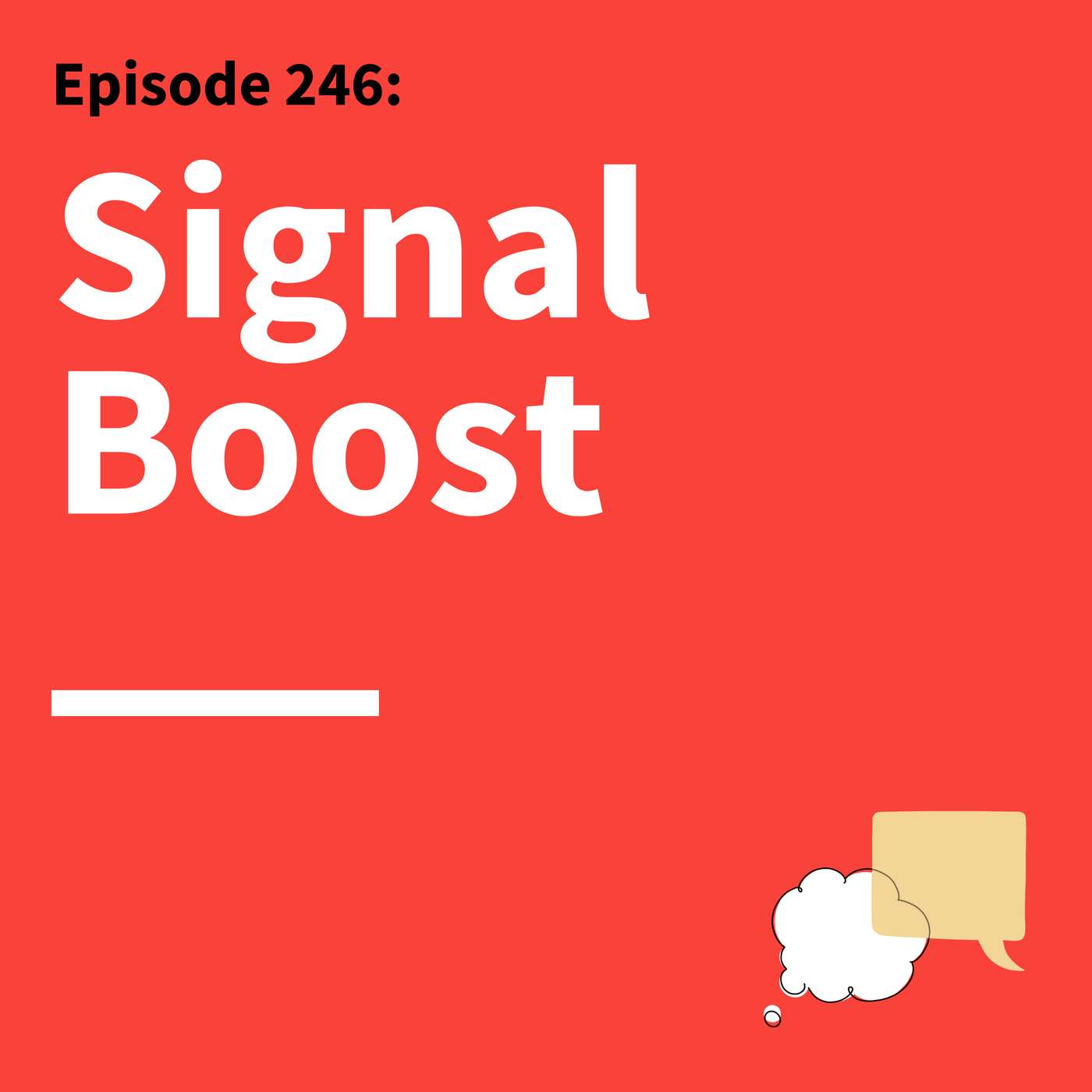

Community and communication go hand-in-hand. For Sandy Pentland https://www.fastersmarter.io/guests/alex-sandy-pentland/, the culture and cohesion of any group “has to do with the stories [people] tell each other.” Pentland is a professor at MIT, where he helped create and direct the MIT Media Lab. As a pioneer in computational social science, he’s using data to map social networks and decode communication. In his latest book, , he explores the interplay between human culture, technological development, and societal change — arguing that communication is the tool that enables groups to achieve these advancements and to cohere throughout them. “Stories are the stuff of culture,” he says. “Sharing stories educates the community… defining the worldview and culture of that group.” In this episode of https://www.fastersmarter.io/, Pentland and host Matt Abrahams explore what our communication patterns reveal about group dynamics and organizational health. From the “honest signals” in our interactions to strategies for strengthening remote work connections, Pentland shares how better communication can fuel more connected communities. EPISODE REFERENCE LINKS: __ __ CONNECT: __ __ CHAPTERS: __ (00:00) - Introduction (02:21) - Honest Signals & Human Behavior (04:14) - The Sociometric Badge Research (05:44) - Human Connection in Remote Work (07:01) - Organizations as Networks (09:33) - How Ideas Spread in Groups (12:44) - Bringing the Right People Together (14:12) - Stories as Cultural DNA (16:55) - The Final Three Questions __ ******** Thank you to our sponsors. THESE PARTNERSHIPS SUPPORT THE ONGOING PRODUCTION OF THE PODCAST, ALLOWING US TO BRING IT TO YOU AT NO COST. STRAWBERRY.ME. https://strawberry.me/quiz?isDirect=1&promotionCode=smart&utm_source=smart GET 50% OFF YOUR FIRST COACHING SESSION TODAY AT STRAWBERRY.ME/SMART https://strawberry.me/quiz?isDirect=1&promotionCode=smart&utm_source=smart


“We can resolve any conflict,” says Dr. Deepak Chopra https://www.fastersmarter.io/guests/dr-deepak-chopra/. All it takes is what he calls “conscious communication.” Chopra is a physician, a leading authority on integrative wellbeing, and the author of over 97 books. His “conscious communication” approach puts presence at the center of all meaningful interactions — bringing together attention, affection, appreciation, and acceptance. When applied to conflicts, his approach turns adversaries into collaborators, leading to what he calls "spiritual solutions" where diverse perspectives and problem-solving lead to better outcomes for all. “We can come up with a creative solution for any adversity,” he says. “All we want is the best outcome for everyone.” In this episode of https://www.fastersmarter.io/, Chopra and host Matt Abrahams explore how presence transforms our interactions, why intentions enable us to accomplish more with less effort, and helpful questions to guide difficult conversations. Whether navigating conflict in our professional or personal lives, Chopra’s insights show why the best resolutions come when we stop trying to be right and start trying to understand. EPISODE REFERENCE LINKS: __ __ CONNECT: __ __ CHAPTERS: __ (00:00) - Introduction (02:31) - The Power of Presence (04:17) - Reframing Conflict (10:27) - The Role of Intention (12:27) - DeepakChopra.ai Explained (14:29) - The Final Three Question __ ******** Thank you to our sponsors. THESE PARTNERSHIPS SUPPORT THE ONGOING PRODUCTION OF THE PODCAST, ALLOWING US TO BRING IT TO YOU AT NO COST. STRAWBERRY.ME. https://strawberry.me/quiz?isDirect=1&promotionCode=smart&utm_source=smart GET 50% OFF YOUR FIRST COACHING SESSION TODAY AT STRAWBERRY.ME/SMART https://strawberry.me/quiz?isDirect=1&promotionCode=smart&utm_source=smart


Community isn't just a feel-good buzzword. According to Gina Bianchini https://www.fastersmarter.io/guests/gina-bianchini/, it's a catalyst for personal and collective transformation. Bianchini is the CEO and founder of community-building platform, Mighty Networks, and author of the book https://www.fastersmarter.io/purpose-design-a-community. "Community is when people come together, and every single member has something to give and something to receive," she explains. In contrast to the one-directional dynamic of a speaker and their audience or a creator and their following, Bianchini argues that the power of community lies in two-way exchanges, where each member benefits the group and benefits from it. "Community is the single most effective way to get results and transformation you just can't get on your own," she says. In this episode of https://www.fastersmarter.io/, Bianchini joins host Matt Abrahams to discuss how to unlock the potential of purposeful communities. She shares strategies for finding your tribe during times of transition, the "people magic” created when we facilitate deep connections, and how creating community enables us to create the world and lives we imagine. https://www.fastersmarter.io/premium/ EPISODE REFERENCE LINKS: __ __ CONNECT: __ __ CHAPTERS: __ (00:00) - Introduction (02:17) - Defining Community vs. Audience (04:05) - Community as a Catalyst for Transformation (06:41) - Finding the Right Community (10:29) - The Future Story Framework (13:22) - People Magic & Facilitation (19:07) - The Final Three Questions __ ******** Thank you to our sponsors. THESE PARTNERSHIPS SUPPORT THE ONGOING PRODUCTION OF THE PODCAST, ALLOWING US TO BRING IT TO YOU AT NO COST. STRAWBERRY.ME. https://strawberry.me/quiz?isDirect=1&promotionCode=smart&utm_source=smart GET 50% OFF YOUR FIRST COACHING SESSION TODAY AT STRAWBERRY.ME/SMART https://strawberry.me/quiz?isDirect=1&promotionCode=smart&utm_source=smart


“There’s no difference between the physiological response to something that you’re excited about and something that you’re nervous about or dreading,” says Andrew Huberman, https://www.fastersmarter.io/guests/andrew-huberman/associate professor of neurobiology and ophthalmology at Stanford University. In this https://www.fastersmarter.io/Rethinks episode, we revisit one of our most popular interviews. In it, Huberman, from the wildly popular Huberman Lab Podcast https://hubermanlab.com/, shares his research on the autonomic continuum, a spectrum between states of high alertness or fear all the way down to deep sleep, and shares how to use the system to your advantage. “If people can conceptualize that the anxiety or stress response is the same as the excitement response, they feel different,” Huberman says. EPISODE REFERENCE LINKS: __ __ CONNECT: __ __ CHAPTERS: __ (00:00) - Introduction (02:50) - Stress & the Autonomic Continuum (04:58) - Controlling Alertness & Calmness (08:47) - Movement & Audience Perception (11:12) - Eye Movements for Anxiety Reduction (13:32) - Two Approaches to Managing Stress (18:16) - Preparing for Stress in Advance (20:18) - Effective Virtual Communication (22:20) - The Final Three Questions __ ******** Thank you to our sponsors. THESE PARTNERSHIPS SUPPORT THE ONGOING PRODUCTION OF THE PODCAST, ALLOWING US TO BRING IT TO YOU AT NO COST. STRAWBERRY.ME. https://strawberry.me/quiz?isDirect=1&promotionCode=smart&utm_source=smart GET 50% OFF YOUR FIRST COACHING SESSION TODAY AT STRAWBERRY.ME/SMART https://strawberry.me/quiz?isDirect=1&promotionCode=smart&utm_source=smart


Sometimes the best way to explain an idea is to show it. That’s why Loom was built — to make communication more visual, authentic, and efficient. By combining video, screen sharing, and AI-powered editing, Loom helps teams connect and collaborate asynchronously, no matter where they are. In this episode of the https://www.fastersmarter.io/ Tech Tools miniseries, host Matt Abrahams talks with Joe Thomas https://www.fastersmarter.io/guests/joe-thomas/, co-founder and CEO of Loom, now part of Atlassian, about how asynchronous video can make communication clearer, faster, and more personal. They discuss why “show, don’t tell” is such an effective communication principle, how authenticity builds trust, and why recording yourself might be one of the best ways to improve how you communicate. In addition to insight-packed discussions, this miniseries explores innovative tools that enhance the way we communicate and connect. Whether you want to make your presentations more memorable, craft stories that stick, or connect with your audience on a deeper level, these episodes will help you communicate with greater clarity, confidence, and impact. EPISODE REFERENCE LINKS: __ __ CONNECT: __ __ CHAPTERS: __ (00:00) - Introduction (01:18) - Loom Elevator Pitch (02:27) - Creation of Loom (03:50) - Show, Don’t Tell: Using Video Effectively (09:15) - Favorite Communicator (10:19) - Communication Hack or Tool __ ******* Thank you to our sponsors. These partnerships support the ongoing production of the podcast, allowing us to bring it to you at no cost. TRY PREZI TODAY AND GET 25% OFF EXCLUSIVELY AT PREZI.COM/THINKFAST http://prezi.com/thinkfast.
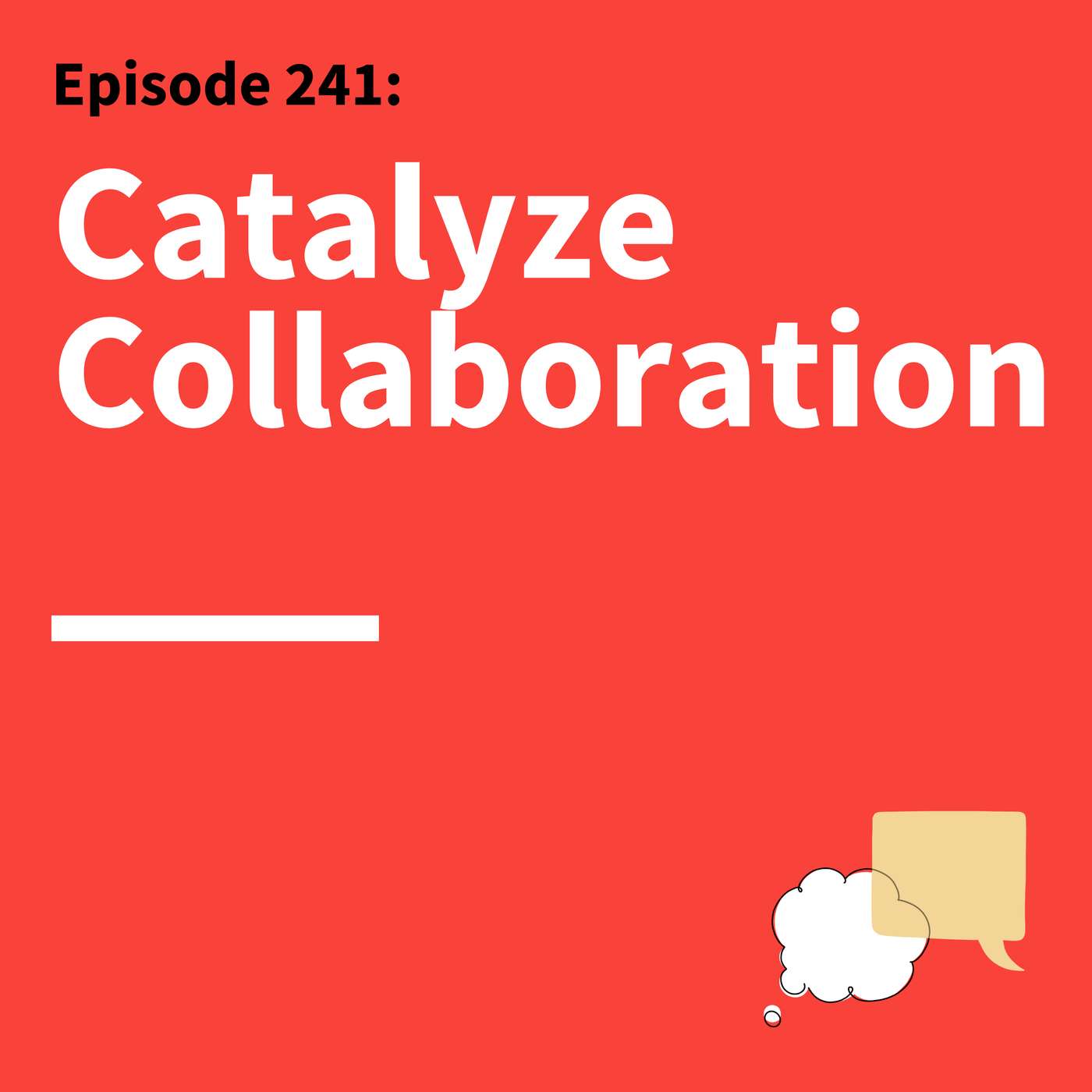

They say teamwork makes the dream work. But as Colin Fisher https://www.fastersmarter.io/guests/colin-fisher/ knows, unlocking the power of groups requires a specific kind of collective communication. Fisher is an associate professor of organizations and innovation at University College London School of Management and author of https://fastersmarter.io/the-collective-edge/. His research reveals the dichotomy of group dynamics: "Groups can be the pinnacle of human accomplishment," he says. "But groups also have these tendencies to restrict us, to take away our individuality, and to sometimes make us the worst versions of ourselves.” The key, he argues, is fostering communication that maximizes the creative synergy of collaboration while minimizing the pressure to conform. In this episode of https://www.fastersmarter.io/, Fisher joins host Matt Abrahams to share evidence-based strategies for effective teamwork, from selecting the ideal group size to fostering psychological safety. Whether with our coworkers, our families, or our friends, Fisher’s insights reveal how collective communication can make or break group success. https://www.fastersmarter.io/premium/ EPISODE REFERENCE LINKS: __ __ CONNECT: __ __ CHAPTERS: __ (00:00) - Introduction (02:19) - Advantages and Disadvantages of Groups (03:53) - What Makes Teams Successful (05:37) - The Ideal Group Size (06:33) - Building Psychological Safety (08:49) - Launching a Team for Success (13:10) - Making Meetings More Effective (16:25) - The Final Three Questions __ ******** THIS EPISODE IS SPONSORED BY GRAMMARLY. LET GRAMMARLY TAKE THE BUSYWORK OFF YOUR PLATE SO YOU CAN FOCUS ON HIGH-IMPACT WORK. DOWNLOAD GRAMMARLY FOR FREE TODAY https://www.grammarly.com/?utm_campaign=arm&utm_medium=cpc&utm_source=podcast&utm_content=directpodcasts


Achieving what you want in life doesn’t just hinge on what you believe about your future. According to Muriel Wilkins https://www.fastersmarter.io/guests/muriel-wilkins/, it has just as much to do with what you believe about your past and present. Wilkins is an executive coach, author, and host of the HBR podcast https://hbr.org/2020/12/podcast-coaching-real-leaders. In her new book, https://fastersmarter.io/leadership-unblocked, she explains how our personal and professional blocks often stem from our own limiting beliefs about ourselves. “A belief is a story that you tell yourself,” she says, “It is the operating principle that is driving your behavior and the decisions you make.” Before we can take actions that will lead us to where we want to go, we have to uncover these hidden beliefs. Otherwise, Wilkins says, “We'll come back right to where we started. It's not just about what we do, it's about what we think about what we do that makes all the difference." In this episode of https://www.fastersmarter.io/, Wilkins and host Matt Abrahams explore the three-step process of uncover, unpack, and unblock — Wilkins’ method for identifying limiting beliefs, understanding how they might be shaping our behavior, and updating narratives to align with who we actually want to be. https://www.fastersmarter.io/premium/ EPISODE REFERENCE LINKS: __ __ CONNECT: __ __ CHAPTERS: __ (00:00) - Introduction (02:17) - The Seven Limiting Beliefs (04:43) - Three Steps to Becoming Unblocked (07:57) - Rethinking Values and Success (09:12) - Healthy vs. Toxic Productivity (11:56) - The Power of Mindset and Reframing (14:32) - Reverse Engineering Your Goals (17:41) - Managing Emotional Investment (21:21) - The Final Three Question __ ******** Thank you to our sponsors. THESE PARTNERSHIPS SUPPORT THE ONGOING PRODUCTION OF THE PODCAST, ALLOWING US TO BRING IT TO YOU AT NO COST. This episode is brought to you by BABBEL https://get.babbel.com/eg_podcast_flags_ame_usa-en?bsc=podcast-thinkfast&btp=default&utm_campaign=podcast-thinkfast&utm_content=podcast..thinkfast..usa..internal&utm_medium=podcast&utm_source=thinkfast&utm_term=generic_v1. THINK FAST TALK SMART LISTENERS CAN GET STARTED ON YOUR LANGUAGE LEARNING JOURNEY TODAY- VISIT BABBEL.COM/THINKFAST http://babbel.com/Thinkfast AND GET UP TO 55% OFF YOUR BABBEL https://get.babbel.com/eg_podcast_flags_ame_usa-en?bsc=podcast-thinkfast&btp=default&utm_campaign=podcast-thinkfast&utm_content=podcast..thinkfast..usa..internal&utm_medium=podcast&utm_source=thinkfast&utm_term=generic_v1 SUBSCRIPTION.
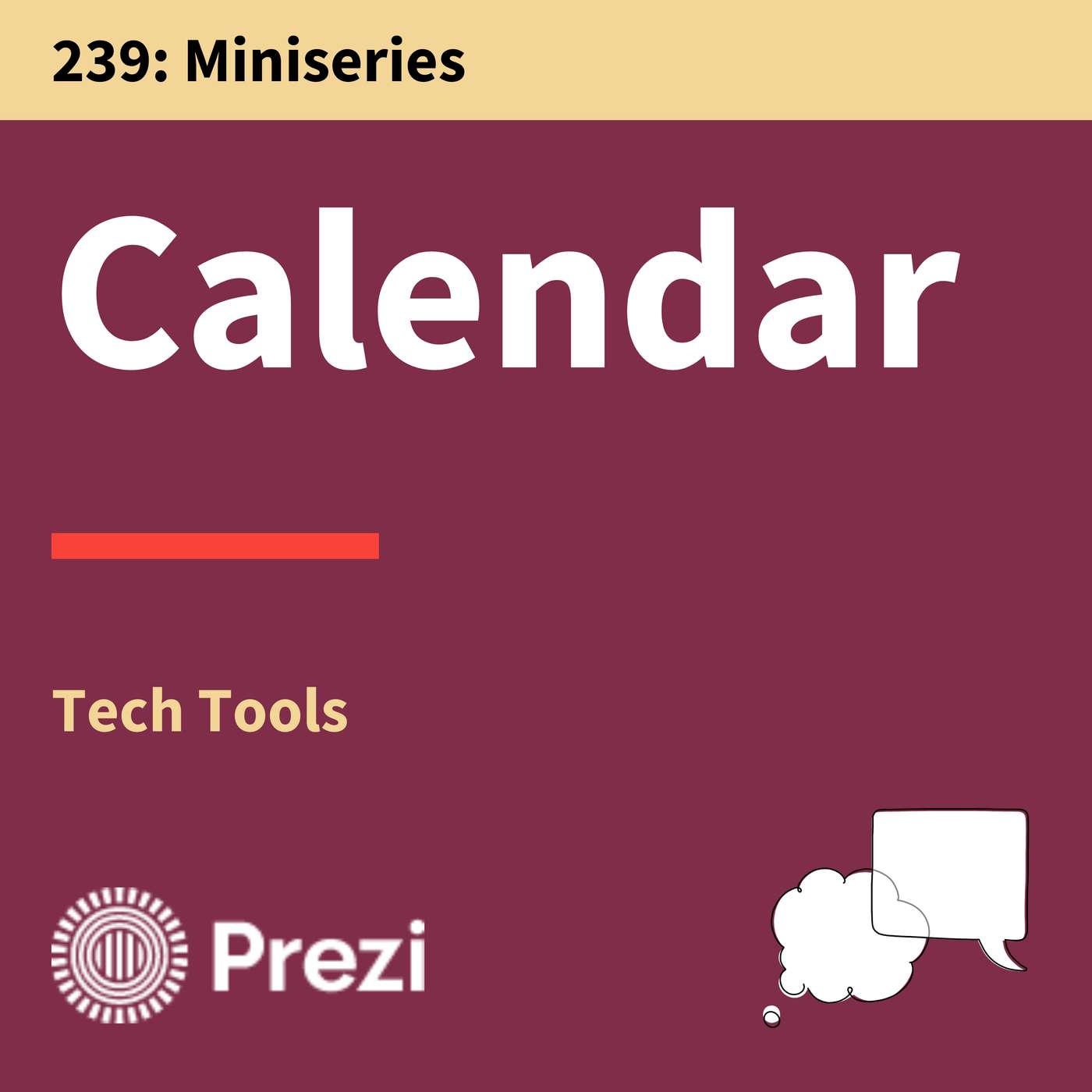

Meetings are where collaboration happens — but too often, scheduling them feels like the biggest barrier to meaningful connection. That’s why Calendly was created: to simplify scheduling and make time for what truly matters — the conversation itself. In this episode of the https://www.fastersmarter.io/ Tech Tools miniseries, host Matt Abrahams talks with Calendly’s Vice President of Growth, Darren Chait https://www.fastersmarter.io/guests/darren-chait/, about how intentional scheduling leads to better communication, stronger relationships, and more productive meetings. They explore how data-driven insights can improve collaboration, reduce burnout, and help teams make every meeting count. In addition to insight-packed discussions, this miniseries explores innovative tools that enhance the way we communicate and connect. Whether you want to make your presentations more memorable, craft stories that stick, or connect with your audience on a deeper level, these episodes will help you communicate with greater clarity, confidence, and impact. EPISODE REFERENCE LINKS: __ __ CONNECT: __ __ CHAPTERS: __ (00:00) - Introduction (01:12) - Calendly Elevator Pitch (02:47) - The Origin of Calendly (04:44) - The Art of Intentional Scheduling (06:33) - Making Meetings More Effective (07:30) - Favorite Communicator (09:31) - Communication Hack or Tool __ ******* Thank you to our sponsors. These partnerships support the ongoing production of the podcast, allowing us to bring it to you at no cost. TRY PREZI TODAY AND GET 25% OFF EXCLUSIVELY AT PREZI.COM/THINKFAST http://prezi.com/thinkfast.


Listening isn’t about waiting for your turn to speak — it’s about being present enough to truly hear. In a world full of noise, slowing down to listen can feel like a radical act. Yet it’s in those moments of stillness and attention that real understanding begins. In this special episode of https://www.fastersmarter.io/, we explore what it means to “listen up” — to engage with intention, empathy, and curiosity. Along the way, listener questions spark insights on how to slow down fast conversations, apply communication tools in real life, and navigate the nuances of culture and connection. Because better communication doesn’t start with what we say — it starts with what we hear. https://www.fastersmarter.io/premium/ EPISODE REFERENCE LINKS: __ __ CONNECT: __ __ CHAPTERS: __ (00:00) - Introduction (02:42) - The Three Ps That Block Good Listening (03:39) - Ace Your Listening: Pace, Space, and Grace (05:59) - Listening Beyond Words: Nonverbal Cues That Matter (06:37) - Listening Through Paraphrasing (08:13) - Practicing Better Listening (09:30) - Choosing the Right Structure for Your Audience (12:55) - Applying Communication Skills Effectively (16:02) - Slowing Down Conversations (20:32) - Practicing and Getting Feedback (23:02) - What’s Next for Think Fast Talk Smart __ ******** Thank you to our sponsors. THESE PARTNERSHIPS SUPPORT THE ONGOING PRODUCTION OF THE PODCAST, ALLOWING US TO BRING IT TO YOU AT NO COST. STRAWBERRY.ME. https://strawberry.me/quiz?isDirect=1&promotionCode=smart&utm_source=smart GET $50 OFF COACHING TODAY AT STRAWBERRY.ME/SMART https://strawberry.me/quiz?isDirect=1&promotionCode=smart&utm_source=smart
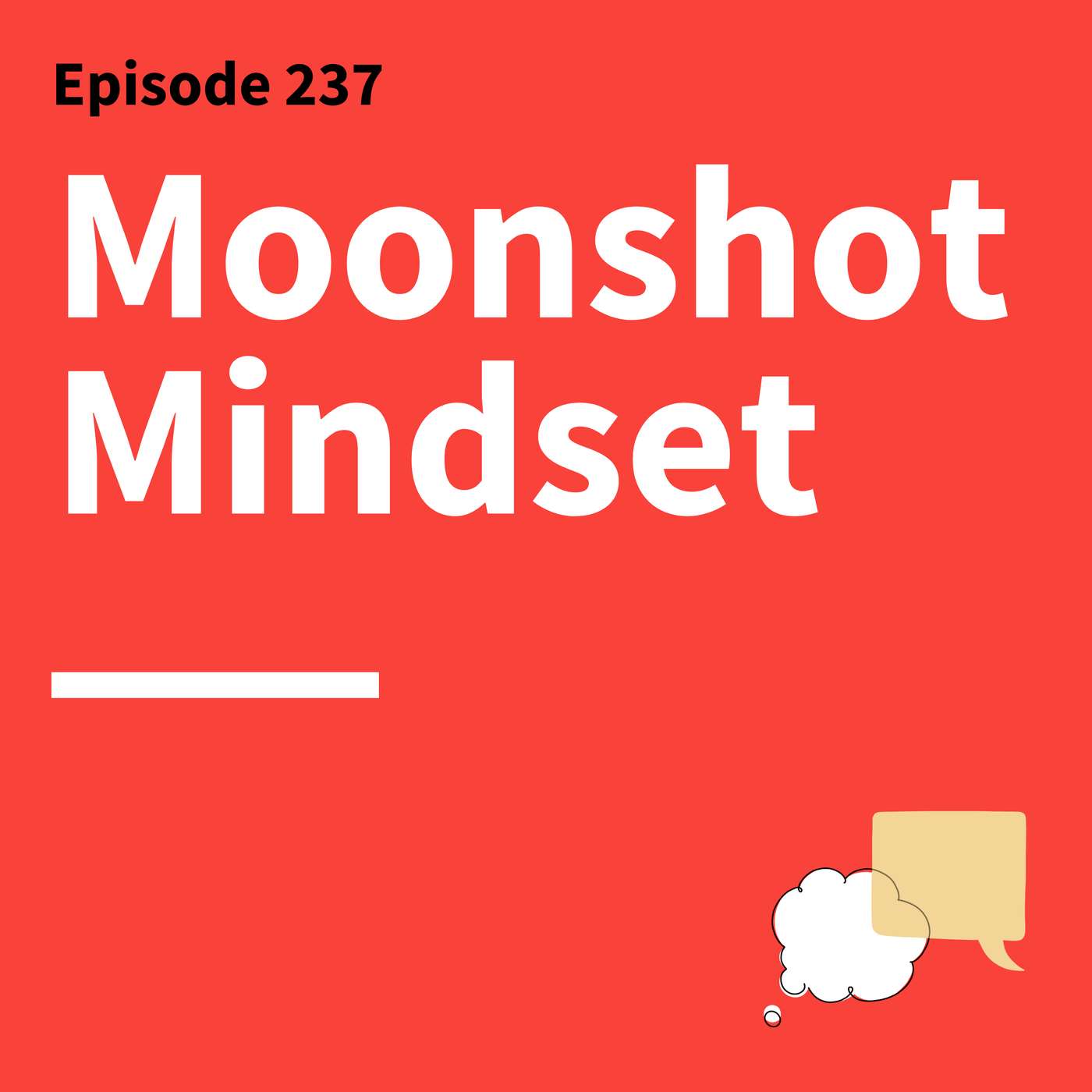

Effective communication isn’t about having all the answers. As Astro Teller https://www.fastersmarter.io/guests/astro-teller/ knows, it’s about finding (and sometimes fumbling) your way through the questions. Teller is a computer scientist, entrepreneur, and inventor who serves as Captain of Moonshots at X, Alphabet's Moonshot Factory. In his work leading teams toward audacious solutions to seemingly unsolvable problems, he embraces what he calls “a learning journey,” where being wrong isn’t the end, but the beginning. “As scary as it is to be wrong,” he says, it’s a necessary part of the discovery process. Whether experimenting in the lab or testing our thoughts and opinions in conversation with others, it’s about having the humility and curiosity to face the limits of our understanding. “When do you learn something? You learn something when you have a model about the world, and then you get some data that tells you you're wrong,” he says. “You learn nothing when you're right.” In this episode of https://www.fastersmarter.io/, Teller and host Matt Abrahams discuss how embracing uncertainty drives innovation, why leaders should reward learning habits over outcomes, and how we learn the most when we’re not afraid to find that we might be wrong. https://www.fastersmarter.io/premium/ EPISODE REFERENCE LINKS: __ __ CONNECT: __ __ CHAPTERS: __ (00:00) - Introduction (02:18) - Defining a Moonshot (04:21) - Building a Learning Machine (07:00) - Learning vs. Productivity (08:35) - Capturing and Sharing Learning (10:49) - Rewarding Habits, Not Outcomes (13:17) - Moonshot Success Stories (16:16) - The Power of Storytelling in Innovation (17:46) - Launching The Moonshot Podcast (19:37) - The Final Three Questions __ ******** Thank you to our sponsors. THESE PARTNERSHIPS SUPPORT THE ONGOING PRODUCTION OF THE PODCAST, ALLOWING US TO BRING IT TO YOU AT NO COST. This episode is brought to you by BABBEL https://get.babbel.com/eg_podcast_flags_ame_usa-en?bsc=podcast-thinkfast&btp=default&utm_campaign=podcast-thinkfast&utm_content=podcast..thinkfast..usa..internal&utm_medium=podcast&utm_source=thinkfast&utm_term=generic_v1. THINK FAST TALK SMART LISTENERS CAN GET STARTED ON YOUR LANGUAGE LEARNING JOURNEY TODAY- VISIT BABBEL.COM/THINKFAST http://babbel.com/Thinkfast AND GET UP TO 55% OFF YOUR BABBEL https://get.babbel.com/eg_podcast_flags_ame_usa-en?bsc=podcast-thinkfast&btp=default&utm_campaign=podcast-thinkfast&utm_content=podcast..thinkfast..usa..internal&utm_medium=podcast&utm_source=thinkfast&utm_term=generic_v1 SUBSCRIPTION. Support Think Fast Talk Smart by JOINING TFTS PREMIUM https://www.fastersmarter.io/p/premium/.


Staying on top of communication starts with staying in control of your inbox. That’s why Rahul Vohra https://www.fastersmarter.io/guests/rahul-vohra/, founder and CEO of Superhuman, believes that how we manage email directly shapes how we manage our time, focus, and relationships. For years, Superhuman has helped professionals reach Inbox Zero faster — reducing email overload and reclaiming time for what truly matters. In this episode of the https://www.fastersmarter.io/ Tech Tools miniseries, host Matt Abrahams talks with Vohra about the philosophy behind Inbox Zero, how better systems lead to clearer communication, and why mindfulness and intentional design can make us more effective communicators. In addition to insight-packed discussions, this miniseries explores innovative tools that enhance the way we communicate and connect. Whether you want to make your presentations more memorable, craft stories that stick, or connect with your audience on a deeper level, these episodes will help you communicate with greater clarity, confidence, and impact. EPISODE REFERENCE LINKS: __ __ CONNECT: __ __ CHAPTERS: __ (00:00) - Introduction (01:18) - The Philosophy Behind Inbox Zero (04:19) - The Superhuman Elevator Pitch (05:50) - The Origin of Superhuman (09:14) - Favorite Communicator (10:17) - Communication Hack or Tool __ ******* Thank you to our sponsors. These partnerships support the ongoing production of the podcast, allowing us to bring it to you at no cost. TRY PREZI TODAY AND GET 25% OFF EXCLUSIVELY AT PREZI.COM/THINKFAST http://prezi.com/thinkfast.
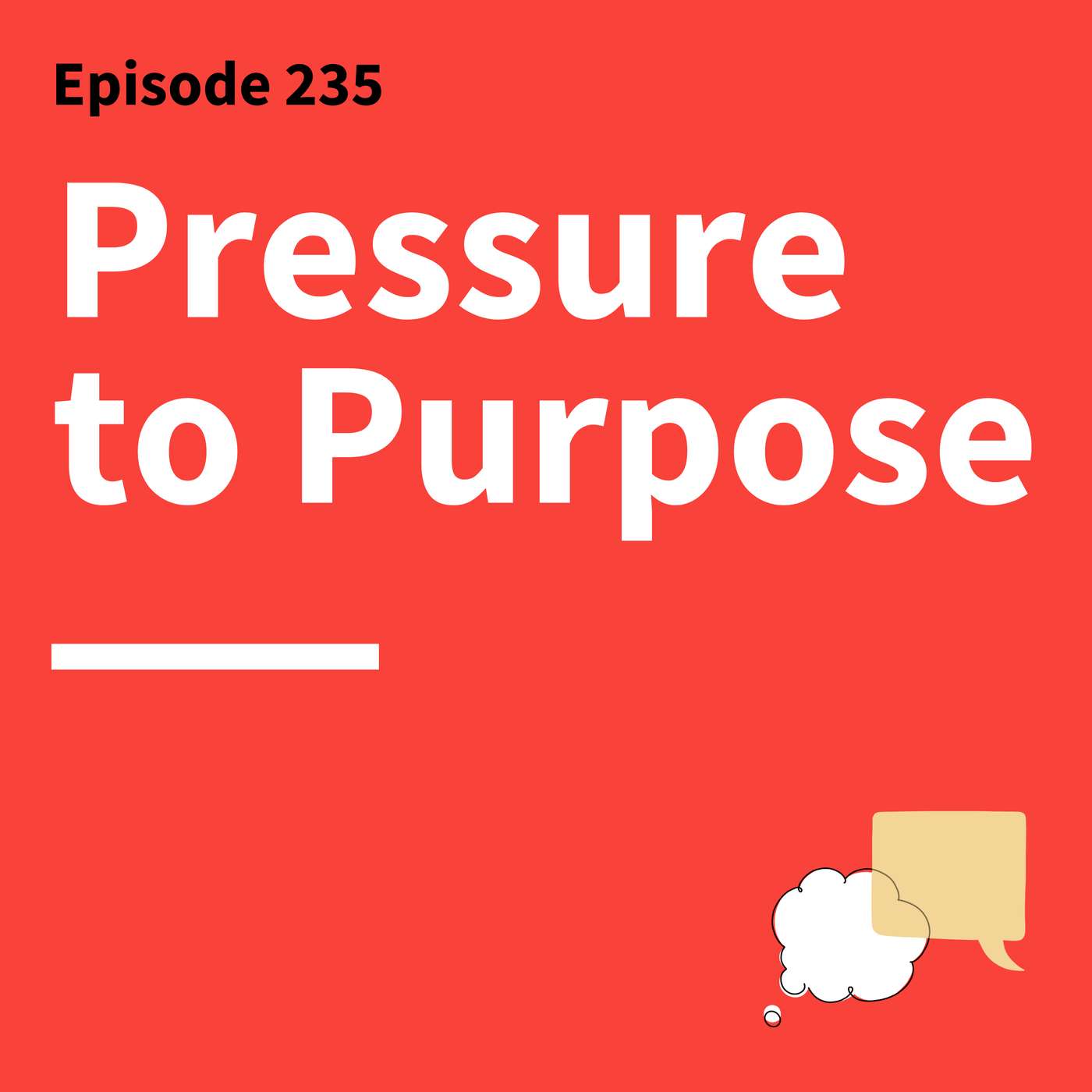

Communicating can feel daunting at times. What does it take to find your voice in the moments that matter most? As Chiney Ogwumike https://www.fastersmarter.io/guests/chiney-ogwumike/ says, “There is freedom on the other side of your fear.” As a professional basketball player, NBA and WNBA analyst for ESPN, and advocate for gender equality in sports, Ogwumike faces many situations where communication is critical. For her, achieving confidence in communication is the same as honing any other skill—embracing failure and refinement through repetition. “The best things in life are things you work out over long periods of time,” she says. “Great people, great communicators, anyone that's working at something, show up each and every day and just chip away, chip away, chip away, until they turn that weakness into a strength.” In this episode of https://www.fastersmarter.io/, Ogwumike and host Matt Abrahams discuss how practice and preparation can equip us for better communication, transforming fear into confidence, perfectionism into authenticity, and weakness into strength. https://www.fastersmarter.io/premium/ EPISODE REFERENCE LINKS: __ __ CONNECT: __ __ CHAPTERS: __ (00:00) - Introduction (02:20) - Communication on the Court (04:02) - Performing Under Pressure (06:11) - Lessons from Great Coaches (08:21) - Embracing Imperfection and Authenticity (11:43) - Strategies for Effective On-Air Communication (16:16) - The Final Three Questions __ ******** Thank you to our sponsors. THESE PARTNERSHIPS SUPPORT THE ONGOING PRODUCTION OF THE PODCAST, ALLOWING US TO BRING IT TO YOU AT NO COST. STRAWBERRY.ME. https://strawberry.me/quiz?isDirect=1&promotionCode=smart&utm_source=smart GET $50 OFF COACHING TODAY AT STRAWBERRY.ME/SMART https://strawberry.me/quiz?isDirect=1&promotionCode=smart&utm_source=smart


Good leadership is about good communication. And for General Stanley McChrystal https://www.fastersmarter.io/guests/general-stanley-mcch/, that means creating a culture of free-flowing information: “The goal is to have everyone know everything all the time,” he says. McChrystal is a retired four-star general, former commander of US and international forces in Afghanistan, and a renowned leadership expert. In his experience building cohesive teams in complex environments, he’s discovered that successful teams are built on a “shared consciousness [where] all have a common contextual understanding of what the situation is.” The key to creating that kind of culture, he says, is radical transparency — from leaders and subordinates alike. Whatever your position, “You are responsible for informing other people of things that they need to know,” he says. In this episode of https://www.fastersmarter.io/, McChrystal and host Matt Abrahams discuss how to build shared consciousness within teams, how to communicate across cultural divides, and how to lead with clarity, context, and character. https://www.fastersmarter.io/premium/ EPISODE REFERENCE LINKS: __ __ CONNECT: __ __ CHAPTERS: __ (00:00) - Introduction (01:47) - Building Shared Consciousness (05:57) - Leading Across Differences (07:37) - Delivering Difficult News (10:02) - Communicating in a Virtual World (16:01) - Character as an Iterative Practice (18:11) - The Final Three Questions __ ******** THIS EPISODE IS SPONSORED BY GRAMMARLY. LET GRAMMARLY TAKE THE BUSYWORK OFF YOUR PLATE SO YOU CAN FOCUS ON HIGH-IMPACT WORK. DOWNLOAD GRAMMARLY FOR FREE TODAY https://www.grammarly.com/?utm_campaign=arm&utm_medium=cpc&utm_source=podcast&utm_content=directpodcasts Become a Faster Smarter Supporter by JOINING TFTS PREMIUM https://www.fastersmarter.io/p/premium/.
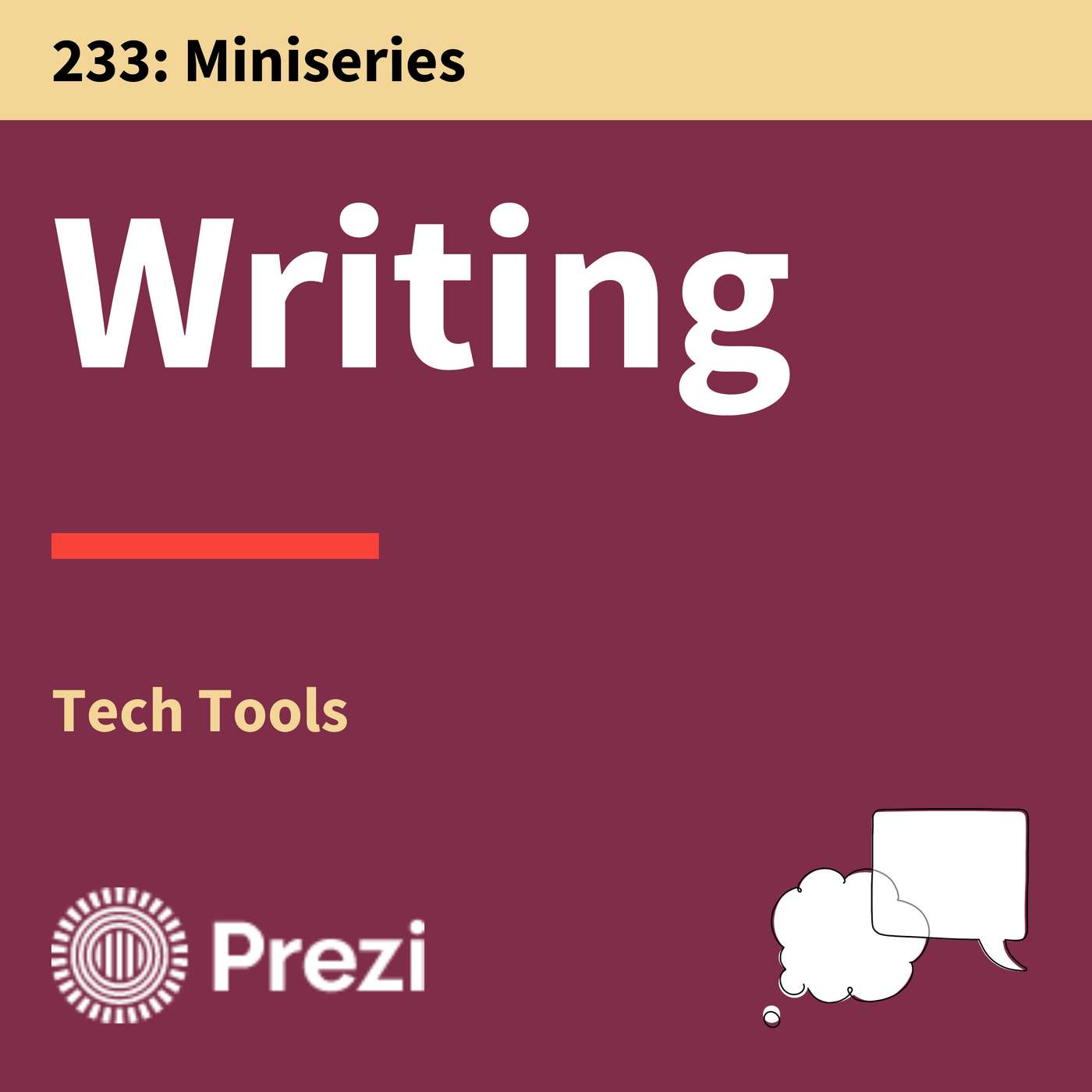

Clarity is the cornerstone of great communication—but turning your thoughts into words isn’t always simple. That’s why Grammarly exists: to help you express yourself with confidence and precision, no matter the context. For over a decade, Grammarly has helped millions of people improve their writing, from everyday emails to high-stakes professional communications. In this episode of the https://www.fastersmarter.io/ Tech Tools miniseries, host Matt Abrahams talks with Grammarly co-founder Max Lytvyn https://www.fastersmarter.io/guests/max-lytvyn/ about the origins of the tool, how AI is shaping the future of writing, and why starting with your goal is the key to effective communication. In addition to insight-packed discussions, this miniseries explores innovative tools that enhance the way we communicate and connect. Whether you want to make your presentations more memorable, craft stories that stick, or connect with your audience on a deeper level, these episodes will help you communicate with greater clarity, confidence, and impact. EPISODE REFERENCE LINKS: __ __ CONNECT: __ __ CHAPTERS: __ (00:00) - Introduction (01:14) - The Origins of Grammarly (02:50) - Grammarly Elevator Structure (04:54) - Lessons on Improving Writing (07:11) - Favorite Communicator (08:08) - Communication Hack or Tool __ ******* Thank you to our sponsors. These partnerships support the ongoing production of the podcast, allowing us to bring it to you at no cost. TRY PREZI TODAY AND GET 25% OFF EXCLUSIVELY AT PREZI.COM/THINKFAST http://prezi.com/thinkfast.


Whether presenting to millions on live television or talking to just one person, Dan Harris https://www.fastersmarter.io/guests/dan-harris/ knows that the quality of every interaction depends on the presence you bring to it. Harris is a former national news anchor for ABC News and is now the host of the 10% Happier podcast and author of http://fastersmarter.io/10-percent-happier and https://fastersmarter.io/meditation-for-fidgety-skeptics. As he knows from experience, there’s power in “Waking up to something fundamental, that the mind is out of control, and you don't want to be owned by it.” How do we break the pattern of being controlled by our thoughts? Mindfulness and self-awareness, he says, put “distance” between us and our “thoughts and urges and emotions,” enabling us to connect with ourselves and others with greater consciousness and clarity. In this episode of https://www.fastersmarter.io/, Harris and host Matt Abrahams discuss how mindfulness can transform our communication, sharing strategies for deeper listening, responding versus reacting, and reflecting what others say back to them. “Relationships are the most important aspect of your happiness,” Harris says. The quality of those connections goes up when “you’re “less stuck in your own head.” EPISODE REFERENCE LINKS: __ __ CONNECT: __ __ CHAPTERS: __ (00:00) - Introduction (01:51) - On-Air Panic Attack (02:59) - Managing Communication Anxiety (04:01) - Nervousness Before Live Audiences (05:48) - Meditation Misconceptions (09:36) - Responding vs. Reacting (12:07) - Mindfulness & Productivity (15:11) - Lessons from Interviewing (17:19) - The Final Three Question __ ******** Thank you to our sponsors. THESE PARTNERSHIPS SUPPORT THE ONGOING PRODUCTION OF THE PODCAST, ALLOWING US TO BRING IT TO YOU AT NO COST. STRAWBERRY.ME. https://strawberry.me/quiz?isDirect=1&promotionCode=smart&utm_source=smart GET $50 OFF COACHING TODAY AT STRAWBERRY.ME/SMART https://strawberry.me/quiz?isDirect=1&promotionCode=smart&utm_source=smart
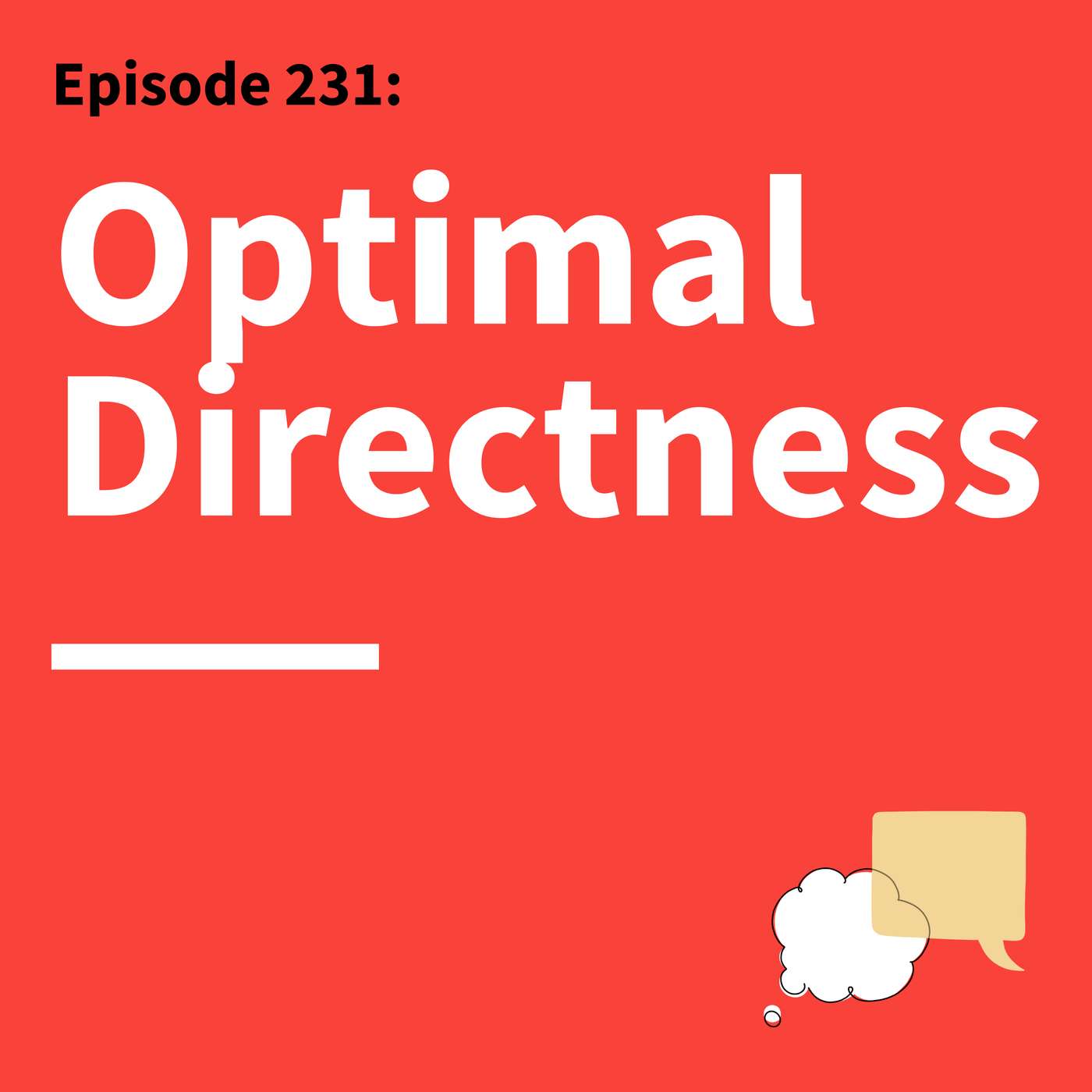

We often speak in hints and half-truths, not because we can’t be direct, but because subtlety protects our relationships. “An awful lot of the time, we don’t just blurt out what we mean,” says Steven Pinker https://www.fastersmarter.io/guests/steven-pinker/. “We hint, we wink, we beat around the bush — counting on our listener to read between the lines, connect the dots, catch our drift.” Pinker is the Johnstone Professor of Psychology at Harvard University, a celebrated linguist and cognitive scientist, and the author of twelve influential books. His latest, http://fastersmarter.io/when-everyone-knows, explores how our shared understanding of awareness — what Steven refers to as common knowledge — and the way we signal it, governs everything from friendships to authority to negotiations. “Common knowledge is what ratifies or annuls social relationships, and that's why blurting something out that contradicts the assumptions of the relationship can blow everything up and be deeply awkward.” In this episode of https://www.fastersmarter.io/, Pinker joins host Matt Abrahams to discuss why humans lean on innuendo, euphemism, and strategic ambiguity. They examine how culture and context shape what we hear, why our social fabric depends on more than just literal meaning, and offer practical ways to refine our communication by paying attention not just to what we say, but to what others know we know To listen to the extended Deep Thinks version of this episode, please visit https://www.fastersmarter.io/premium/ EPISODE REFERENCE LINKS: __ __ CONNECT: __ __ CHAPTERS: __ (00:00) - Introduction (02:23) - Why We Speak Indirectly (06:39) - The Role of Context (10:35) - Cross-Cultural Perspectives (11:51) - Hypocrisy as Social Glue (13:43) - Clarity, Conciseness, & Grace (17:07) - Metaphors We Live By (20:06) - The Final Three Questions __ ******** Thank you to our sponsors. THESE PARTNERSHIPS SUPPORT THE ONGOING PRODUCTION OF THE PODCAST, ALLOWING US TO BRING IT TO YOU AT NO COST. Build a better website with Squarespace today. TRY SQUARESPACE FREE https://www.squarespace.com/?channel=podcast&subchannel=starlight&source=thinkfast FOR 14 DAYS AND RECEIVE 10% OFF YOUR FIRST PURCHASE Become a Faster Smarter Supporter by JOINING TFTS PREMIUM https://www.fastersmarter.io/p/premium/.
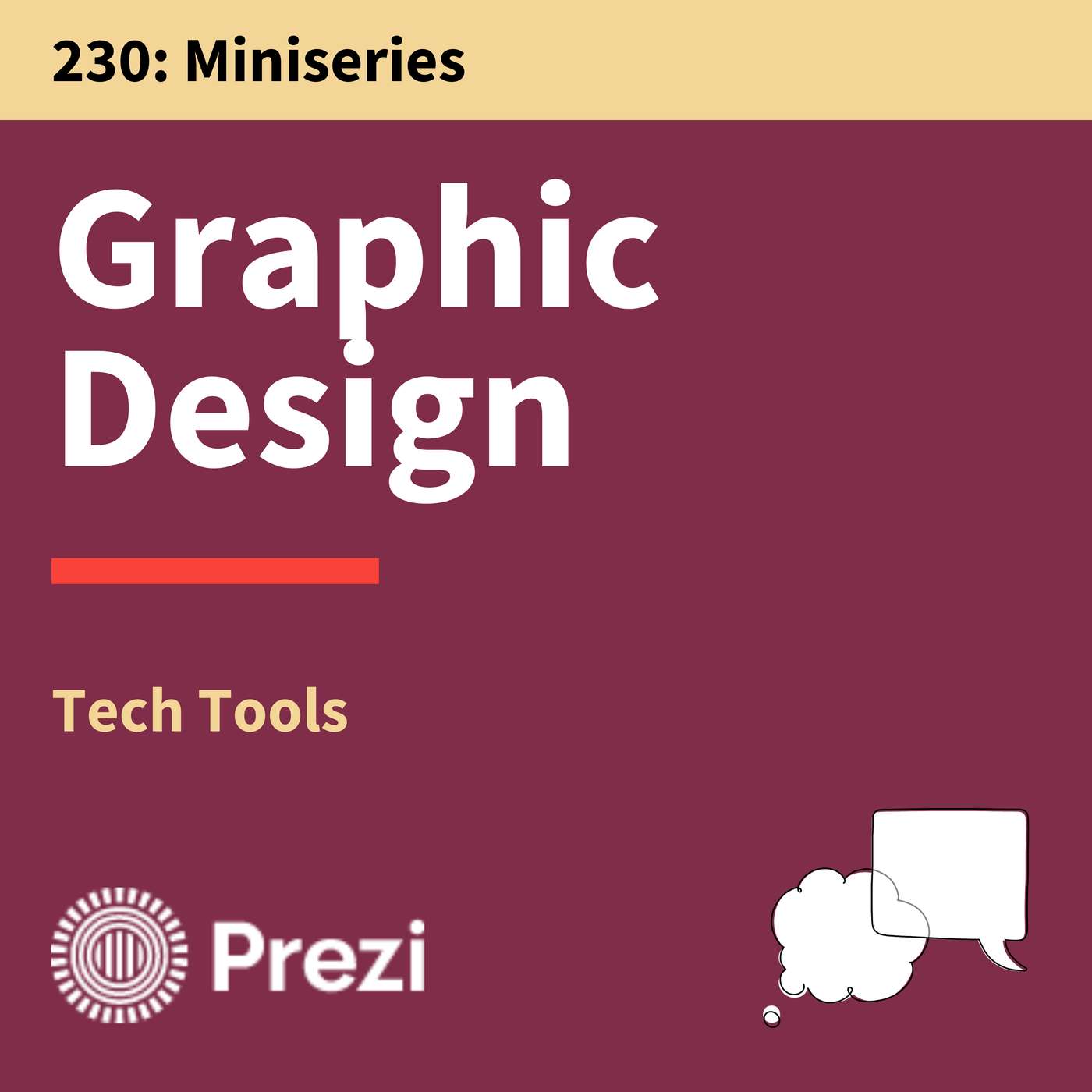

Clear communication isn’t just about sharing information — it’s about making ideas stick. That’s why Yuhki Yamashita https://www.fastersmarter.io/guests/yuhki-yamashita/, Chief Product Officer at Figma, believes the key to effective collaboration lies in turning complex concepts into simple, memorable visuals. For years, Figma has been reshaping the way teams brainstorm, design, and build together — making it easier than ever to bring ideas to life in real time. In this episode of the https://www.fastersmarter.io/ Tech Tools miniseries, host Matt Abrahams talks with Yamashita about how visuals facilitate shared understanding, why frameworks enhance team communication, and how to craft insights that people naturally remember and reuse. In addition to insight-packed discussions, this miniseries explores innovative tools that enhance the way we communicate and connect. Whether you want to make your presentations more memorable, craft stories that stick, or connect with your audience on a deeper level, these episodes will help you communicate with greater clarity, confidence, and impact. EPISODE REFERENCE LINKS: __ __ CONNECT: __ __ CHAPTERS: __ (00:00) - Introduction (01:16) - Figma Elevator Structure (02:07) - Joining Figma (03:17) - The Power of Visual Storytelling (04:36) - Creating Shared Meaning with Visuals (05:37) - Favorite Communicator (08:59) - Communication Hack or Tool __ ******* Thank you to our sponsors. These partnerships support the ongoing production of the podcast, allowing us to bring it to you at no cost. TRY PREZI TODAY AND GET 25% OFF EXCLUSIVELY AT PREZI.COM/THINKFAST http://prezi.com/thinkfast.


Original executive producer Jenny Luna https://www.fastersmarter.io/guests/jenny-luna/ turns the tables and interviews host and strategic communications lecturer Matt Abrahams about his bestselling book, https://www.fastersmarter.io/think-faster-talk-smarter. To celebrate the book’s second anniversary, this special Rethinks episode dives into Matt’s most practical tips, powerful frameworks, and mindset shifts to help you speak with confidence in any spontaneous situation. From managing anxiety to structuring your thoughts on the fly, it’s filled with tools to help you become a more effective communicator. EPISODE REFERENCE LINKS: __ __ CONNECT: __ __ CHAPTERS: __ (00:00) - Introduction (03:15) - Defining Spontaneous Speaking (04:05) - Origins of Matt’s Interest (04:56) - The Six-Step Methodology (05:41) - Shifting Your Mindset (09:51) - Practical Structures for Speaking (12:06) - The “F-Word” of Spontaneous Speaking (13:39) - Communication Lessons from Martial Arts (14:59) - The Karate Pants Story (16:55) - Hosting 100 Episodes (18:10) - On-the-Spot Challenges __ ******** Thank you to our sponsors. THESE PARTNERSHIPS SUPPORT THE ONGOING PRODUCTION OF THE PODCAST, ALLOWING US TO BRING IT TO YOU AT NO COST. Build a better website with Squarespace today. TRY SQUARESPACE FREE https://www.squarespace.com/?channel=podcast&subchannel=starlight&source=thinkfast FOR 14 DAYS AND RECEIVE 10% OFF YOUR FIRST PURCHASE Become a Faster Smarter Supporter by JOINING TFTS PREMIUM https://www.fastersmarter.io/p/premium/.


Communicating under pressure isn’t just a useful skill — it can be the difference between escalation and resolution. For Chris Voss https://www.fastersmarter.io/guests/christopher-voss/, former FBI hostage negotiator and CEO of The Black Swan Group, it’s a daily discipline built on empathy, self-regulation, and intentional listening. In this expanded conversation from our Spontaneous Speaking miniseries, Voss offers a rare window into the mindset and methods that helped him show up calm, focused, and adaptable when the pressure is sky-high. “Emotional intelligence is an insane accelerator to outcomes,” Voss shares, explaining how empathy, tone, and timing can shift the direction of any conversation. He breaks down techniques like labeling and mirroring, explores how to use silence and word choice strategically, and explains why overthinking can be just as risky as acting too fast. From gut-level pattern recognition to tactical use of voice, Voss shows how communication becomes more impactful when we’re not trying to control — but to connect. In this episode of https://www.fastersmarter.io/, Voss and host Matt Abrahams dive into how negotiation techniques developed for life-or-death situations can be applied far beyond them — offering powerful takeaways for anyone who needs to think clearly under pressure, stay agile in the moment, and communicate effectively when it matters most. EPISODE REFERENCE LINKS: __ __ CONNECT: __ __ CHAPTERS: __ (00:00) - Introduction (02:50) - Path to Hostage Negotiation (03:42) - Power of Emotional Intelligence (05:00) - Staying Calm Under Pressure (06:10) - Mental Prep & Mindset (07:18) - Trusting Your Gut (07:58) - Avoiding Overthinking (09:01) - Flexibility in Negotiations (10:15) - Listen More, Talk Less (10:31) - Labeling & Mirroring (12:51) - Tone Shapes Impact (14:06) - The Final Three Questions __ ***** Thank you to our sponsors: STRAWBERRY.ME. https://strawberry.me/quiz?isDirect=1&promotionCode=smart&utm_source=smart GET $50 OFF COACHING TODAY AT STRAWBERRY.ME/SMART https://strawberry.me/quiz?isDirect=1&promotionCode=smart&utm_source=smart Support Think Fast Talk Smart by JOINING TFTS PREMIUM https://www.fastersmarter.io/p/premium/.
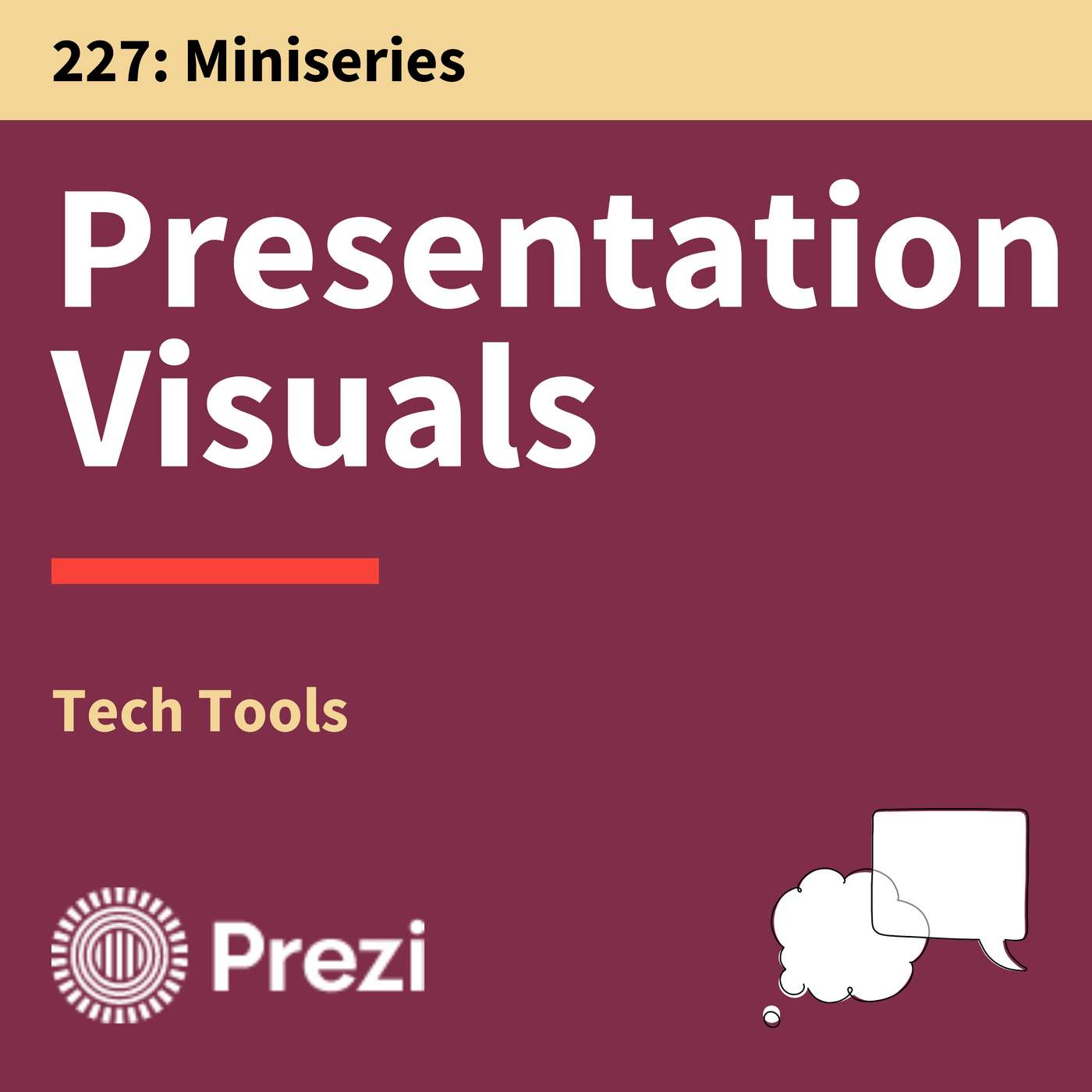

Great communication isn’t just about what you say — it’s about what your audience remembers. That’s why Jim Szafranski https://www.fastersmarter.io/guests/jim-szafranski/, CEO of Prezi, believes that visuals and storytelling are key to making ideas stick. For more than 15 years, Prezi https://prezi.com/ has been reimagining the way we share information, helping communicators move beyond static slides and into dynamic, memorable experiences. In the first episode of the https://www.fastersmarter.io/ Tech Tools miniseries, host Matt Abrahams talks with Szafranski about why visuals are so powerful for retention, how non-linear storytelling can make presentations more engaging, and the role AI now plays in shaping the stories we tell. In addition to insight-packed discussions, this miniseries explores innovative tools that enhance the way we communicate and connect. Whether you want to make your presentations more memorable, craft stories that stick, or connect with your audience on a deeper level, these episodes will help you communicate with greater clarity, confidence, and impact. EPISODE REFERENCE LINKS: __ __ CONNECT: __ __ CHAPTERS: __ (00:00) - Introduction (01:18) - Prezi Elevator Structure (02:09) - The Power of Visuals in Storytelling (04:12) - Making Complex Ideas Simple (06:22) - When to Use Visuals (09:01) - Advantages of Non-Linear Storytelling (11:26) - AI’s Role in Visual Communication (14:22) - Favorite Communicator (15:37) - Communication Hack or Tool __ ******* Thank you to our sponsors. These partnerships support the ongoing production of the podcast, allowing us to bring it to you at no cost. TRY PREZI TODAY AND GET 25% OFF EXCLUSIVELY AT PREZI.COM/THINKFAST http://prezi.com/thinkfast.
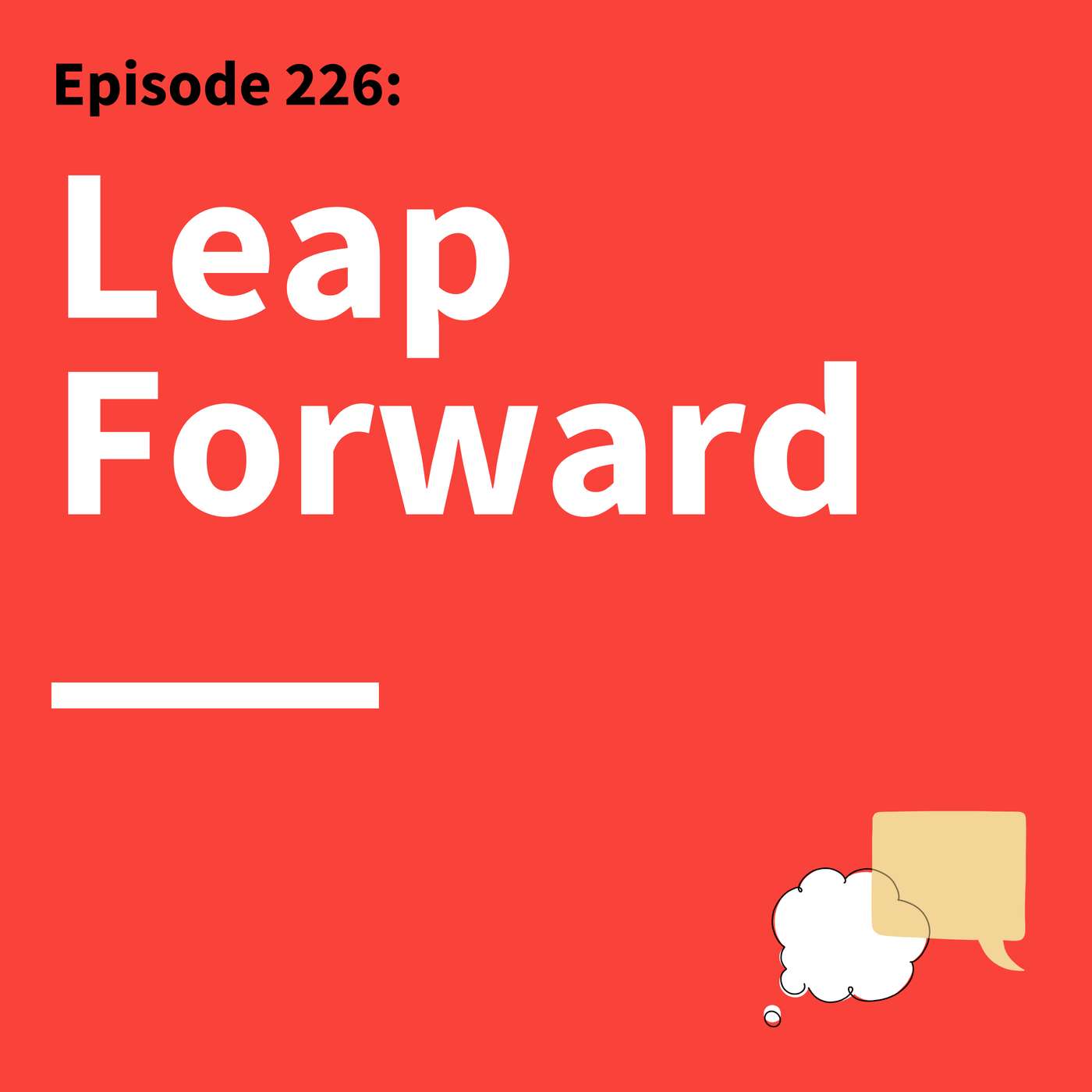

Making the leap — to a new career, to the next stage of a relationship, or to a different version of yourself — requires honest communication. For Ilana Golan https://www.fastersmarter.io/guests/ilana-golan/, being “leap-ready” requires that we answer three questions: Why me? Why this? And why now? Golan knows all about these leaps, as her career spans corporate executive roles, entrepreneurship, and even F-16 flight instruction. As the founder of Leap Academy https://www.leapacademy.com/ and host of the Leap Academy Podcast https://www.leapacademy.com/podcast, she helps equip others to navigate their own personal and professional reinventions. As she says, “It’s really about communicating from the vision,” which starts as an inside job. “Why is this the right thing for me right now? You convince yourself first, because when you're [at] peace with what you're trying to do, it's a lot easier to convince others.” In this episode of https://www.fastersmarter.io/, Golan and host Matt Abrahams explore how honest communication shapes every stage of reinvention, whether that’s listening to the signals your mind and body are sending you — like “sleepwalking through life” and imagining something more — or articulating your pivot in ways that create understanding rather than resistance. Wherever you hope to leap, Golan’s insights show how to communicate through change with confidence and clarity. EPISODE REFERENCE LINKS: __ __ CONNECT: __ __ CHAPTERS: __ (00:00) - Introduction (01:39) - Breaking Barriers & Career Patterns (02:18) - Waking Up to Change (03:42) - Signs It’s Time for a Pivot (06:45) - The Rise of Portfolio Careers (10:17) - Communicating Career Leaps (13:29) - Finding Clarity in Reinvention (20:01) - The Final Three Questions __ ***** Thank you to our sponsors. These partnerships support the ongoing production of the podcast, allowing us to bring it to you for free. THIS EPISODE IS BROUGHT TO YOU BY BABBEL https://get.babbel.com/eg_podcast_flags_ame_usa-en?bsc=podcast-thinkfast&btp=default&utm_campaign=podcast-thinkfast&utm_content=podcast..thinkfast..usa..internal&utm_medium=podcast&utm_source=thinkfast&utm_term=generic_v1. THINK FAST TALK SMART LISTENERS CAN START YOUR LANGUAGE LEARNING JOURNEY TODAY- VISIT BABBEL.COM/THINKFAST http://babbel.com/Thinkfast AND GET UP TO 55% OFF YOUR BABBEL https://get.babbel.com/eg_podcast_flags_ame_usa-en?bsc=podcast-thinkfast&btp=default&utm_campaign=podcast-thinkfast&utm_content=podcast..thinkfast..usa..internal&utm_medium=podcast&utm_source=thinkfast&utm_term=generic_v1 SUBSCRIPTION.


Like it or not, algorithms now decide whose messages get heard. “If you want to communicate effectively,” says Adam Aleksic https://www.fastersmarter.io/guests/adam-aleksic/, “you need to be exactly aware of what that medium is doing.” Aleksic is a linguist, author, and educational content creator with millions of followers across TikTok, Instagram, and YouTube. His latest book, https://fastersmarter.io/algospeak, explores how the platforms we use create new contexts that require new ways of communicating. “Every medium uniquely affects how we communicate, and we adapt our speech to these media,” he says. In the same way that we tailor communication for the contexts of the office, the gym, or the bar, digital platforms — and the algorithms that drive them — require the same contextualized communication. “You have to appeal to [the] algorithm,” he says. In this episode of https://www.fastersmarter.io/, Aleksic and host Matt Abrahams examine how words are born, change meaning, and spread in the digital age. Their conversation highlights practical ways to be more intentional with the words we choose by considering the medium, understanding the context, and adapting communication accordingly. https://www.fastersmarter.io/premium/ EPISODE REFERENCE LINKS: __ __ CONNECT: __ __ CHAPTERS: __ (00:00) - Introduction (02:21) - Language, Labels, & Identity (04:40) - What Is Algospeak? (05:46) - Generational Language Gaps (08:03) - Communicating for Multiple Mediums (10:45) - Mastering Virality & Engagement (12:12) - Semiotics & Going Viral (13:58) - The Evolution of “Like” (15:09) - Hedging, Ambiguity, & Power Dynamics (17:47) - Actionable Takeaways on Communication (18:58) - Grammar: Rules, Context, & Changing Norms (21:01) - The Final Three Questions __ ***** Thank you to our sponsors: STRAWBERRY.ME. https://strawberry.me/quiz?isDirect=1&promotionCode=smart&utm_source=smart GET $50 OFF COACHING TODAY AT STRAWBERRY.ME/SMART https://strawberry.me/quiz?isDirect=1&promotionCode=smart&utm_source=smart Build a beautiful website with SQUARE SPACE https://www.squarespace.com/?channel=podcast&subchannel=starlight&source=thinkfast FOR FREE TODAY TODAY, AND WHEN YOU'RE READY TO LAUNCH, USE CODE THINKFAST & SAVE 10% Support Think Fast Talk Smart by JOINING TFTS PREMIUM https://www.fastersmarter.io/p/premium/.


Why modern communication still relies on ancient words and narratives. All communication and connection depend on one thing: language. That’s why Laura Spinney https://www.fastersmarter.io/guests/laura-spinney/ says understanding language — where it comes from and how it evolves over time — can help us use it more effectively. “Language is incredibly powerful,” says Spinney, an author and journalist published in the Atlantic, National Geographic, Nature, and New Scientist. As “humanity’s oldest tool,” language has evolved as we have, which Spinney explores in her latest book, https://www.fastersmarter.io/proto. In addition to the words themselves, there are also the stories that humans have carried with them for millennia. “Some stories that we still tell today,” Spinney notes, have remained stable for tens of thousands of years — providing more than just entertainment — shaping how we understand the world, share knowledge, and build community. In this episode of https://www.fastersmarter.io/, Spinney and host Matt Abrahams discuss why language and storytelling are fundamental to being human, what makes a story compelling, and how our ever-evolving language continues to be our best tool for communication and connection. https://www.fastersmarter.io/premium/ EPISODE REFERENCE LINKS: __ __ CONNECT: __ __ CHAPTERS: __ (00:00) - Introduction (02:24) - Power & Limits of Language (02:55) - Detecting Lies (04:46) - Origins of Storytelling (07:42) - What Makes a Great Story (10:31) - Proto-Indo-European Language (12:52) - Language Families & Connections (15:06) - Language Clues in History (17:17) - The Final Three Questions __ ***** Thank you to our sponsors: Stanford Continuing Studies. ENROLL TODAY https://continuingstudies.stanford.edu/courses/detail/20251_COM-101 FOR MY COURSE STARTING SEPTEMBER 30TH STRAWBERRY.ME. https://strawberry.me/quiz?isDirect=1&promotionCode=smart&utm_source=smart GET $50 OFF COACHING TODAY AT STRAWBERRY.ME/SMART https://strawberry.me/quiz?isDirect=1&promotionCode=smart&utm_source=smart Support Think Fast Talk Smart by JOINING TFTS PREMIUM https://www.fastersmarter.io/p/premium/.
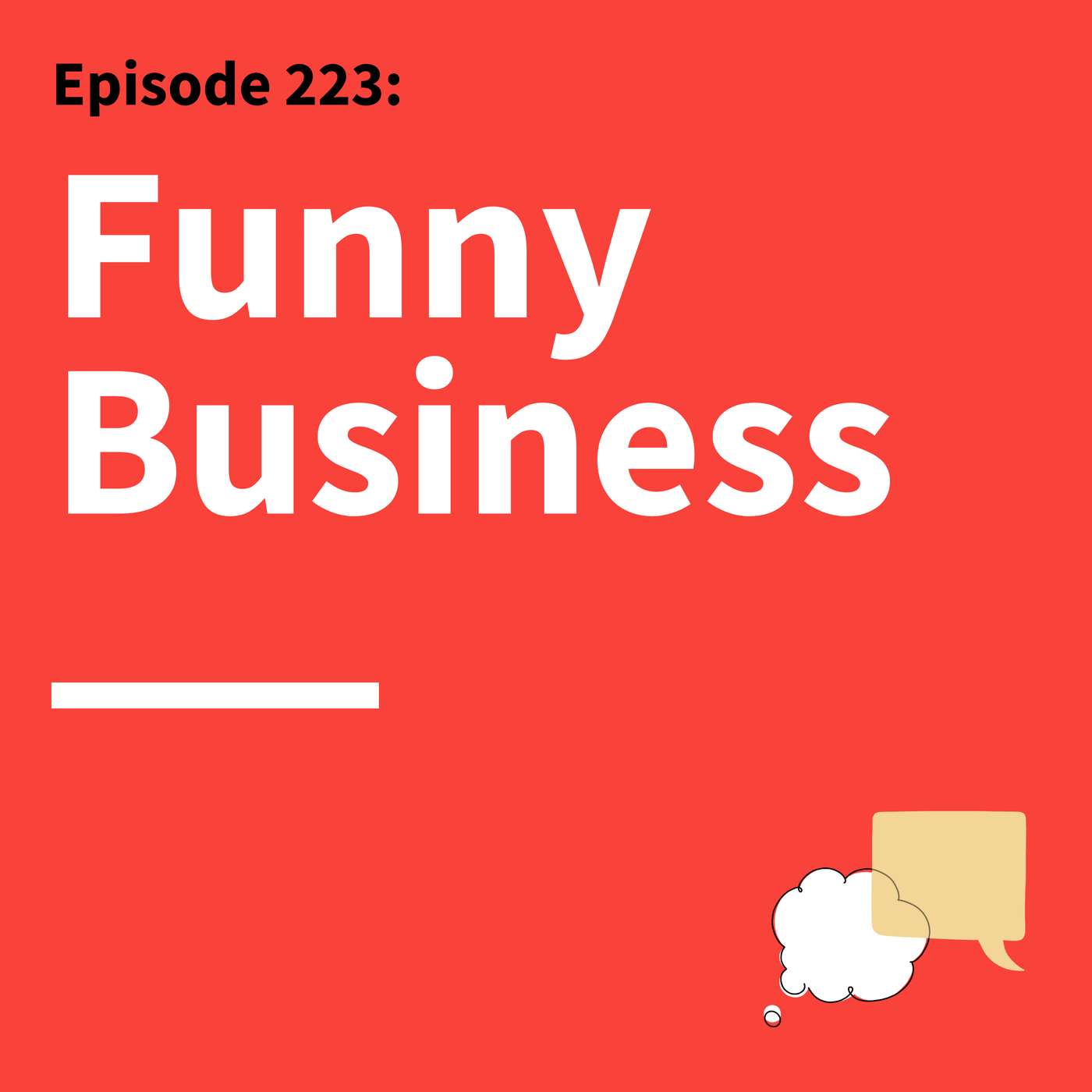

Humor in communication isn’t all fun and games. According to Alison Wood Brooks https://www.fastersmarter.io/guests/alison-wood-brooks/ and Naomi Bagdonas https://www.fastersmarter.io/guests/naomi-bagdonas/, levity is one of the most serious tools we have in building successful connections. Wood Brooks and Bagdonas, both teachers, authors, and experts in the field of communication, recognize how crucial levity is to our professional and personal interactions. “It’s easy to think of [humor] as this extra bonus thing,” says Wood Brooks. “What we find is it’s incredibly core to how people are relating to each other.” Bagdonas agrees: “When there's the presence of laughter in team meetings, those teams are more successful and more creative. Leaders with a sense of humor—not even a good sense of humor—are seen as more motivating, more admired, [and] their teams report being more engaged.” In this episode of https://www.fastersmarter.io/, Wood Brooks and Bagdonas join host Matt Abrahams to explore levity as a mindset, or as Bagdonas puts it, “Navigating life on the precipice of a smile.” Together, they share how lightness and humor can break barriers, bridge connections, and unlock the door to better communication. https://www.fastersmarter.io/premium/ EPISODE REFERENCE LINKS: __ __ CONNECT: __ __ CHAPTERS: __ (00:00) - Introduction (03:13) - Talk Tour Insights (04:33) - Top Advice on Asking Questions (06:43) - Guiding Principles for Leaders (09:17) - Importance of Levity (11:17) - Why Humor Matters (13:06) - Letting Go of Comfort (16:24) - Overthinking Levity (18:30) - Creating Space for Levity __ ***** This Episode is sponsored by Stanford. Stay Informed on Stanford's world changing research by signing up for the STANFORD REPORT https://news.stanford.edu/connect/connect-2024?utm_source=newsletter&utm_medium=email&utm_campaign=tfts&utm_id=TFTS Support Think Fast Talk Smart by JOINING TFTS PREMIUM https://www.fastersmarter.io/p/premium/.
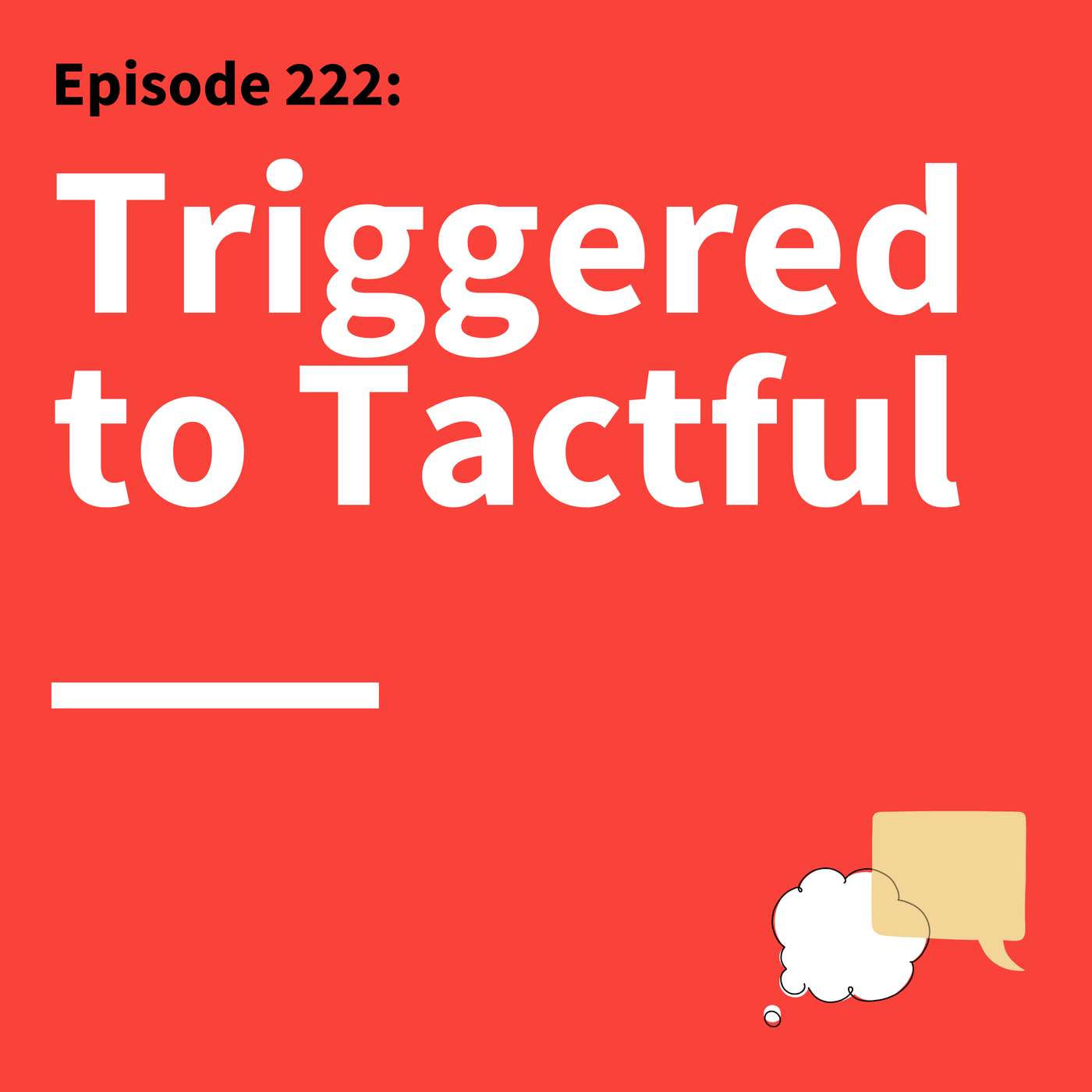

You want a more successful career, a more fulfilling relationship, a more meaningful life? What if all that’s standing in your way — are the conversations that you’re avoiding? “Most things that we want in life are on the other side of a difficult conversation,” says Jenn Wynn https://www.fastersmarter.io/guests/jenn-wynn/, a professor at NYU Stern School of Business and previously the director of education at the Obama Foundation. For nearly 10 years, she has taught a course on difficult conversations that equips people to communicate through discomfort in pursuit of what they want. “Sometimes it's a difficult conversation with a loved one, a colleague, a boss… sometimes it's a difficult conversation with myself,” she says. “Are you going to give up on your biggest dreams because you weren't willing to step out of your comfort zone?” In this episode of https://www.fastersmarter.io/, Wynn and host Matt Abrahams discuss how to build the “hard but worth-it skills” necessary for difficult communication. Whether it's asking for a raise, setting boundaries, or addressing conflict, Wynn’s insights show that the conversations you’re avoiding aren’t just holding you back — they’re keeping you from the life you really want. https://www.fastersmarter.io/premium/ EPISODE REFERENCE LINKS: __ __ CONNECT: __ __ CHAPTERS: __ (00:00) - Introduction (02:27) - Understanding Difficult Conversations (04:44) - Developing Emotional Intelligence (05:44) - Self-Awareness, Pause, Reframe (07:59) - Common Communication Barriers (09:55) - Listening for Understanding (12:32) - Using AI for Communication (14:24) - Creating Psychological Safety (17:00) - The Final Three Questions __ ******** THIS EPISODE IS BROUGHT TO YOU BY STRAWBERRY.ME. https://strawberry.me/quiz?isDirect=1&promotionCode=smart&utm_source=smart GET $50 OFF COACHING TODAY AT STRAWBERRY.ME/SMART https://strawberry.me/quiz?isDirect=1&promotionCode=smart&utm_source=smart Become a Faster Smarter Supporter by JOINING TFTS PREMIUM https://www.fastersmarter.io/p/premium/.


Staying calm and focused while translating high-stakes conversations in real time isn’t just a language skill — it’s a masterclass in communication under pressure. And for Giampaolo Bianchi https://www.fastersmarter.io/guests/giampaolo-bianchi/, simultaneous interpreter for the United Nations and World Health Organization, it’s a challenge he meets with presence, precision, and a whole lot of preparation. In this expanded conversation from our Spontaneous Speaking series, Bianchi offers a behind-the-scenes look at how he prepares for — and performs in — moments where being calm, in control, and adaptable are essential. “We don’t translate words — we translate ideas,” Bianchi explains, highlighting the mindset shift that allows interpreters to go beyond language and convey meaning with clarity and nuance. He shares the role of rigorous preparation, physical grounding, and mental focus in his work, and explains how tools like note systems, pre-session rituals, and active listening help manage cognitive load during live interpretation. In this episode of https://www.fastersmarter.io/, Bianchi and host Matt Abrahams explore how the principles of simultaneous interpretation apply far beyond the booth — offering valuable strategies for anyone who needs to communicate effectively under pressure, adapt in the moment, and ensure their smartest communication happens without a script. EPISODE REFERENCE LINKS: __ __ CONNECT: __ __ CHAPTERS: __ (00:00) - Introduction (02:42) - Becoming a UN Interpreter (03:50) - Staying Calm Under Pressure (05:03) - Translating Emotion, Not Just Words (06:10) - Memory and Focus Techniques (07:51) - The Power of Preparation (09:17) - Pre-Meeting Rituals and Readiness (10:34) - Handling Mistakes in Real Time (11:44) - Interpreter Habits in Daily Life (12:45) - The Final Three Questions __ ***** This Episode is sponsored by Stanford. Stay Informed on Stanford's world changing research by signing up for the STANFORD REPORT https://news.stanford.edu/connect/connect-2024?utm_source=newsletter&utm_medium=email&utm_campaign=tfts&utm_id=TFTS Support Think Fast Talk Smart by JOINING TFTS PREMIUM https://www.fastersmarter.io/p/premium/.
